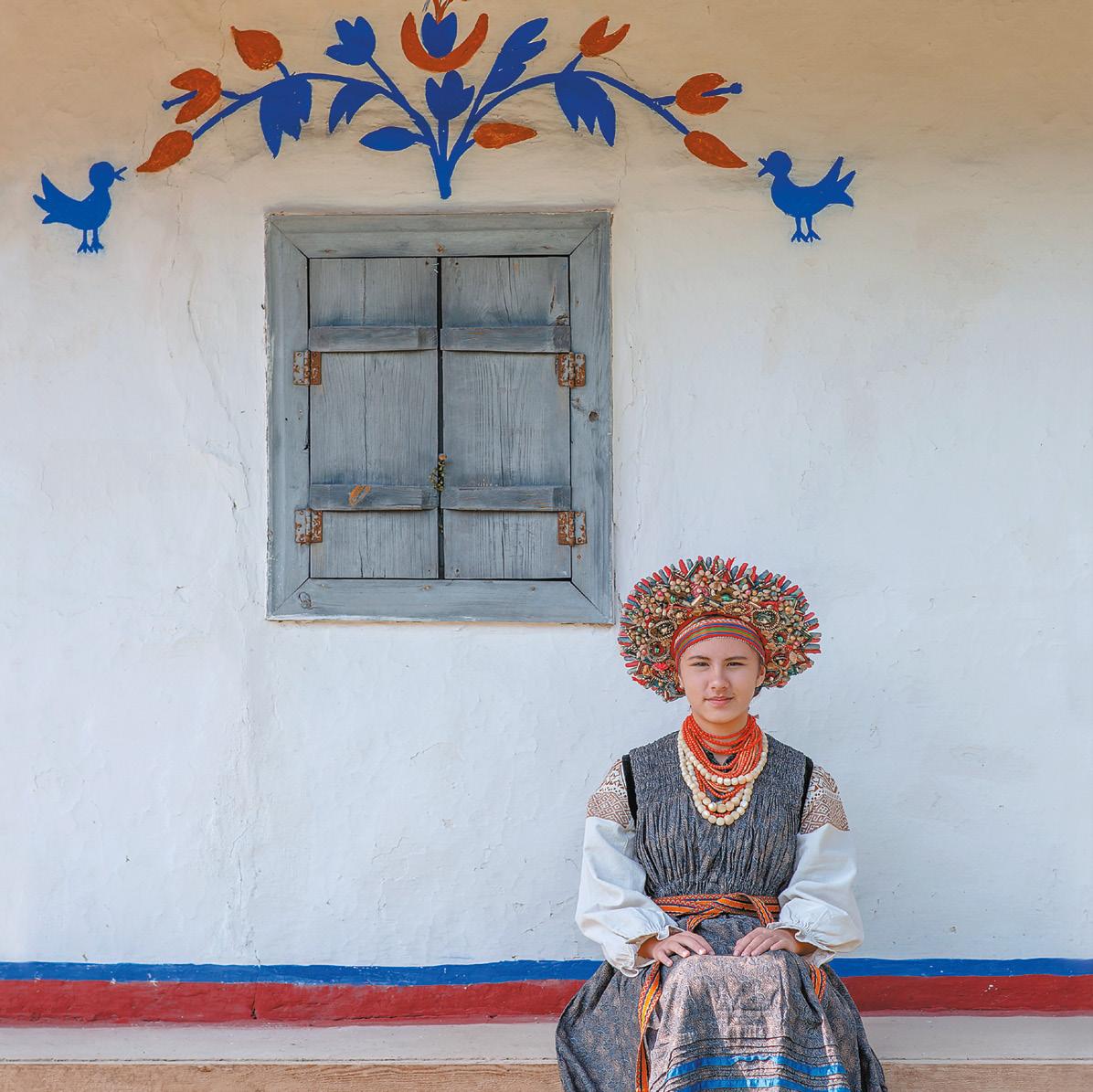
EUROPEAN HERITAGE AWARDS / EUROPA NOSTRA AWARDS LAUREATES 2022
EUROPEAN HERITAGE AWARDS / EUROPA NOSTRA AWARDS

2022 LAUREATES
Editorial Team Audrey Hogan (Coordinator) Lorena Aldana Ortega Elena Bianchi Miruna Găman Eveline Mineur Joana Pinheiro Camilla Scopigni Graphic Design Krzysztof Radoszek - Radoszek Arts Printing Quantes As part of Europa Nostra’s mission to safeguard our built and natural heritage, this publication has been produced using sustainably sourced paper and techniques. ISSN 1876-309X Cover and inside cover photos World Vyshyvanka Day, UKRAINE © Olexandr Tkachuk 2021 | Sewn Signs, ROMANIA © ASOCIATIA SEMNE CUSUTE Europa Nostra The European Voice of Civil Society Committed to Cultural Heritage International Secretariat Lange Voorhout 35 NL – 2514 EC The Hague +31 (0) 70 302 40 50 info@europanostra.org Brussels office Rue de l’Industrie 10 B-1000 Brussels +32 2 894 74 99 bxl@europanostra.org Copyright © 2022 Europa Nostra All rights reserved. This information may be freely used and copied for non-commercial purposes, provided that the source is acknowledged. This publication is produced with the support of the Creative Europe programme of the European Union. This publication reflects the views of many authors and neither the European Commission nor Europa Nostra can be held responsible for any use which may be made of the information contained therein.
For more information: europeanheritageawards.eu europanostra.org ec.europa.eu/programmes/creative-europe
Heritage Awards Coordinator
Elena Bianchi eb@europanostra.org
Programme Officer
Audrey Hogan ah@europanostra.org
European Heritage Awards / Europa Nostra Awards
The European Heritage Awards / Europa Nostra Awards were launched by the European Commission in 2002 and have been run by Europa Nostra ever since. For 20 years, the Awards have identi fied and raised awareness of best practices in the heritage field, encouraged connections among practitioners and stakeholders, and demonstrated the multiples values of cultural and natural heritage to Europe’s society, economy and environment.
The Awards bring major benefits to the winners, such as greater (inter)national exposure, follow-on funding and increased visitor numbers. In addition, the Awards programme fosters a greater care for our shared heritage amongst Europe’s citizens.
The Awards honour up to 30 remarkable heritage achievements from all parts of Europe every year. The Grand Prix laureates, each with a monetary award, are chosen from among the laureates and one laureate receives the Public Choice Award, also now with a monetary award, that is chosen in an online poll. Since 2002, in dependent expert juries have selected 588 award-winning projects from 34 countries. The Awards are funded by the Creative Europe programme of the European Union.
The Awards are presented to the winners at the European Heri tage Awards Ceremony, taking place during the annual European Cultural Heritage Summit. The European Heritage Awards Ceremony 2022 took place in Prague, Czechia, organised with the support of the European Commission, the Czech Ministry of Culture, and as part of the official programme of the Czech Presidency of the EU.
The Grand Prix and Public Choice Award laureates are not re corded in this publication and are instead recorded on the official website of the Awards.
Contents
Introduction
Mariya Gabriel, European Commissioner for Innovation, Research, Culture, Education and Youth and Hermann Parzinger, Executive President of Europa Nostra
Laureates
CATEGORY CONSERVATION & ADAPTIVE REUSE
Aachen Battery, Atlantikwall Raversyde, West-Flanders | BELGIUM
Villa E-1027, Roquebrune-Cap-Martin | FRANCE

Monument of Episkopi, Sikinos | GREECE
Atlungstad Distillery, Ottestad | NORWAY
Convent of the Capuchos, Sintra | PORTUGAL
House of Religious Freedom, Cluj-Napoca | ROMANIA
Illa del Rei, Menorca | SPAIN
St. Andrew’s Church, Kyiv | UKRAINE
CATEGORY RESEARCH
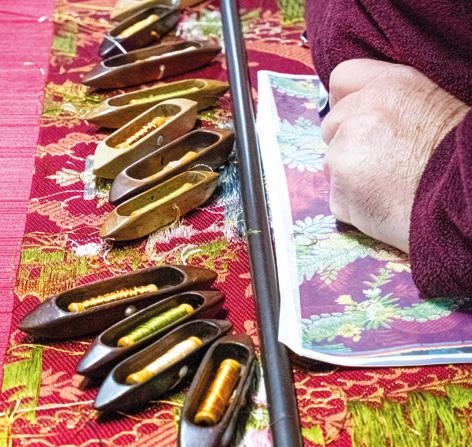
Heritage Opportunities/threats within Mega-Events in Europe (HOMEE) | CYPRUS / ITALY / POLAND / UNITED KINGDOM 24 SILKNOW | FRANCE / GERMANY / ITALY / POLAND / SLOVENIA / SPAIN
Heritage Quest | THE NETHERLANDS
Safeguarding of Sicilian Puppet Theatre | ITALY
CATEGORY EDUCATION, TRAINING & SKILLS
Masters and Apprentices | FINLAND 32
International Course on Wood Conservation Technology | NORWAY 34 TISH Jewish Food Festival, Warsaw | POLAND 36 Piscu School Museum and Workshop | ROMANIA 38 Sewn Signs | ROMANIA 40 Symphony | SPAIN 42
4
8
8
10
12
14
16
18
20
22
26
28
30
2 CONTENTS
CATEGORY CITIZENS’ ENGAGEMENT & AWARENESS-RAISING
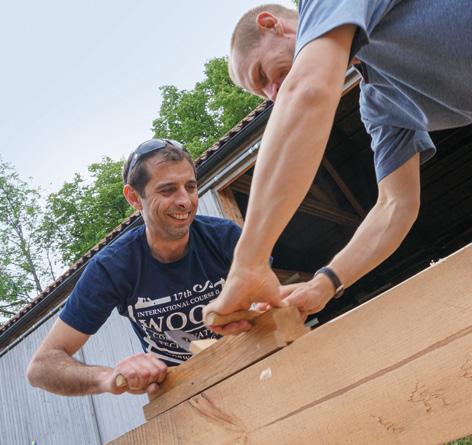
Rivers of Sofia | BULGARIA
Return to the Sámi Homeland | FINLAND Swapmuseum, Apulia | ITALY Va’ Sentiero | ITALY
“Lumbardhi Public Again” Project, Prizren | KOSOVO* Museum in the Village | PORTUGAL PAX-Patios de la Axerquía, Córdoba SPAIN Wikipedra | SPAIN
Kenan Yavuz Ethnography Museum, Bayburt | TURKEY** World Vyshyvanka Day UKRAINE
* This designation is without prejudice to positions on status, and is in line with UNSCR 1244/1999 and the ICJ Opinion on the Kosovo declaration of independence.
**Europa Nostra Awards are presented to remarkable heritage achievements from European countries not taking part in the EU’s Creative Europe programme.
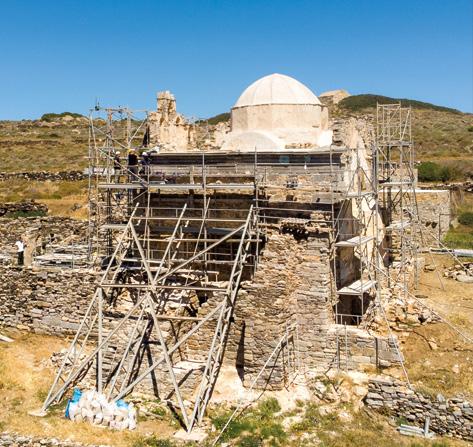
CATEGORY HERITAGE CHAMPIONS
Costa Carras †, Athens | GREECE (posthumously) 64 La Paranza Cooperative, Naples | ITALY 66 Elżbieta Szumska, Złoty Stok | POLAND
Selection Committees the Heritage Awards Heritage Awards credits
44
46
48
50
52
54
|
56
58
60
|
62
68
and
Jury 70
Assessors 74 Photo
76
3
Introduction
Our shared cultural heritage is key to a better future
It is our immense pleasure and honour to present the winners of the European Heritage Awards / Europa Nostra Awards 2022. This year, which marks the 20th anniversary of Europe’s top Awards in the heritage field, 31 outstanding best-practice examples for the safeguarding of heritage from 19 countries across Europe have been awarded.
These winners bring us hope and inspiration as we join our voices and forces to build a better future for all. They have been carefully selected by leading experts from a range of disciplines in the cultural heritage sphere. Their achievements are creative, innovative and truly exemplary. As such, these winners are compelling ambassadors of how best to restore, revitalise and enhance our cultural heritage.
At a particularly trying time for Europe and the world, we wish to convey a special message of support and solidarity to the people of Ukraine, to their culture, and to the many heritage professionals and volunteers who continue to work there as Russia’s invasion of their country continues. In this context, we are particularly proud that two of this year’s winners come from Ukraine: St. Andrew’s Church in Kyiv, awarded in the Conservation & Adaptive Reuse category and World Vyshyvanka Day, awarded in the Citizens’ Engagement & Awareness-raising category. These two projects are testimony of the tremendous dedication of the Ukrainian people to preserve their tangible and intangible heritage, which is such a central part of their culture, identity, memory and sense of belonging.
The people behind each of these 31 winning initiatives, and the range of expertise they possess, clearly demonstrate that the nature of the cultural heritage sector is a true blend of various disciplines. For each project, their success has been the result of the combined dedication and prodigious skills of architects, artisans, educators, scientists, designers, artists, musicians, engineers and engaged citizens. This sheds a light on the creative link between culture, art, science and innovation with heritage as a dynamic and cohesive force that bridges them all.
It also convincingly shows that only by bringing people togeth er – people from all backgrounds and from all walks of life – can we build a more hopeful, more sustainable, more inclusive and more beautiful future. This is a key aim of the New European Bauhaus –
launched by the European Commission and its President, Ursula von der Leyen - of which Europa Nostra is an official partner and proud contributor. Together, we are mobilised to place culture and cultural heritage at the heart of the implementation of the European Green Deal. Therefore, the European Heritage Awards / Europa Nostra Awards are a welcome instrument to highlight how heritage has a crucial role to play in achieving these goals.
In this post-pandemic reality, this is more important than ever. Many of the winning initiatives were born in response to the pandemic, showing the resilience of the heritage sector, while others give evidence of how the health emergency has changed the way we live. This is true of HOMEE , for example, awarded in the Research category, a European cooperation project that addresses mega-events in heritage cities and has closely examined what we have learned from events organised during the pandemic. This is also true for Va’ Sentiero from Italy, awarded in the Citizens’ Engagement & Awareness-raising category, which was a timely response to the desire of many people to reconnect with nature and natural heritage during the pandemic and responds to the pressing need to change our way of life in order to contribute to climate action.
While we celebrate 2022 as the European Year of Youth, we are underlining just how crucial young people are to the creation of our collective future. We are therefore especially proud to see that so many of the winners of the European Heritage Awards / Europa Nostra Awards 2022 are initiatives that have been launched by young people or that effectively empower young people in their activities. For example, the project Masters and Apprentices from Finland, awarded in the Education, Training & Skills category, engages with heritage to improve well-being among younger and older generations alike, by providing greater accessibility to heritage and by engaging all generations in heritage stewardship.
All of these European heritage champions and success stories convey a vital message: our shared cultural heritage is essential to a better, more peaceful, more sustainable, more inclusive and more beautiful future.
4 INTRODUCTION


 Mariya Gabriel
European Commissioner for Innovation, Research, Culture, Education and Youth
Hermann Parzinger Executive President of Europa Nostra
Mariya Gabriel
European Commissioner for Innovation, Research, Culture, Education and Youth
Hermann Parzinger Executive President of Europa Nostra
5
Laureates
In 2022, a total of 200 applications were submitted to the European Heritage Awards / Europa Nostra Awards by organisations and individuals from 34 countries across Europe.
Conservation & Adaptive Reuse projects, including the restoration of buildings and their adaptation to new uses; new buildings in historic settings; urban and rural landscape rehabilitation; the conservation and interpretation of archaeological sites, and the care for collections of works of art and objects;
Research projects in the field of cultural heri tage, including studies, digitisation projects and/ scientific publications which lead to tangible effects for the safeguard and enhancement of cultural heritage and/or to improve the access, enjoyment and understanding of heritage assets by communities;
Education, Training & Skills initiatives in the field of tangible and/or intangible cultural heritage that foster knowledge transfer, capacity-building and/or enhance traditional or new skills and crafts related to heritage;
This year, the European Heritage Awards / Europa Nostra Awards honoured 31 remarkable achievements from 19 countries.
All entries were evaluated by the Selection Committees (see pages 70-71), one per category, who shortlisted a total of 60 entries. The shortlisted entries were then assessed in situ, whenever possible, by independent experts (see page 74). The Heritage Awards Jury (see pages 72-73), composed of the Chairs of each of the Selec tion Committees and additional experts in the field, then chose
Each year, the Awards are presented to outstanding achieve ments of European significance in the newly defined categories:
Citizens’ Engagement & Awareness-raising initiatives in the field of tangible and/or intangible cultural heritage which foster social cohesion, inclusion, multicultural dialogue and understanding, nurture a sense of place and belonging, celebrate diversity and multiple identities as well as stimu late citizens’ engagement, ownership and civic responsibility;
Heritage Champions, that is, influential and inspiring individuals or organisations whose exemplary action demonstrates an exceptional level of dedication, impact and civic engagement in the safeguarding and enhancement of cultural heritage.
the 31 winners from among the shortlisted projects. The Selection Committees and the Heritage Awards Jury are composed of experts from all over Europe.
Each laureate receives a certificate and a bronze wall plaque to fix in a visible location related to their initiative. The winners of the Grand Prix and of the Public Choice Award, chosen from among the winners, each receive a monetary award of €10,000.
6 LAUREATES
Conservation & Adaptive Reuse projects
Research projects Education, Training & Skills Citizens’ Engagement & Awareness Heritage Champions 7
The Aachen Battery is a German coastal battery from the First World War, located in the Provincial domain Atlantikwall Raversyde, on the coast of West Flanders near the city of Ostend. It is the only German WWI coastal battery of which enough remains for visitors to grasp its structure. This gives aNNo Architects’ restoration and regeneration of the site great European significance. aNNo Archi tects and the Province of West Flanders turned a collection of hard to interpret WWI bunkers, gun emplacements and artefacts into a readable and accessible heritage site, well-integrated in the sur rounding dune landscape. In close collaboration with scenographic agency Exponanza , the story of the Great War was visualised and enhanced the visitors’ experience. The project was financed by the Province of West Flanders with the support of Tourism Flanders, through the impulse programme Flemish Coast 1914-1918, and the EU funded project “World War 2 Heritage” within the Interreg programme 2 Seas
During the Second World War, the Aachen Battery was reused as part of the Atlantikwall, the Nazi-German defence line stretching along the west coast of Europe. Before its restoration, the site’s WWI story was drowned out by its WWII story. The restoration, which took place in continuous dialogue with various partners and stakeholders, managed to successfully present the site’s WWI story in a coherent way.
Physical accessibility was also improved. The Aachen Battery consists of a footpath along the coastline and connects restored bunkers and other buildings with the artillery positions. Wheelchair users can now follow the entire footpath and elements, such as tactile models, subtitled videos and 3D models, which are positioned at a suitable height with enough surrounding space. Throughout the path’s construction, the guiding principle was to disturb the ecosystem as little as possible, which led to the choice of clay seashells that integrates harmoniously into the dune landscape. The lighting of the path has a limited impact on the local fauna and is bat-friendly.
The Aachen Battery also presents the human stories connected to the site. In the reconstructed soldiers’ quarters, visitors can
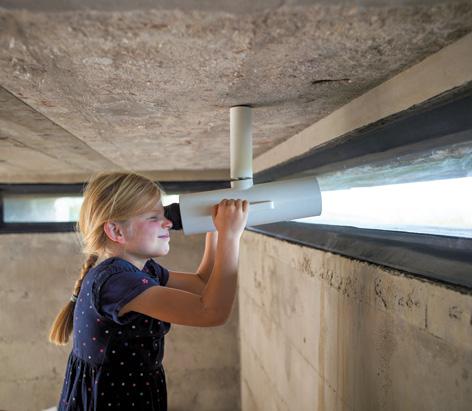
listen to the soldiers’ stories while resting in military hammocks. An important attempt was made to illustrate that the German soldiers, like the allies, also lived in difficult circumstances and that there were also many German casualties in the trenches.
“The revitalisation of the Aachen Battery is unique in its kind, with great European significance and pedagogical value. This well-restored heritage site calls for its visitors to reflect on how to build peace after a terrible war. The incorporation of contemporary art in the heritage space is laudable”, commented the Awards’ Jury.
Aachen Battery, Atlantikwall Raversyde, West-Flanders | Belgium
The restoration and regeneration of this well-preserved German WWI coastal battery is of great European significance and pedagogical value.
CATEGORY CONSERVATION & ADAPTIVE REUSE8

9 Contact: hello@annoarchitecten.be | www.annoarchitecten.be | info@raversyde.be | www.raversyde.be | info@exponanza.be | www.exponanza.be
Villa E-1027 was designed in the 1920s by the Irish architect and fur niture designer Eileen Gray with, and for, Jean Badovici, a Romanian architect trained in France. The villa is found in an isolated seaside location in Roquebrune-Cap-Martin on the French Riviera. Upon its publication in Badovici’s architectural journal, the villa, includ ing more than 180 pieces of furniture designed by Gray, was soon regarded as a groundbreaking manifestation of the Modern Move ment. After decades of environmental stress and ill-maintenance, the non-profit Association Cap Moderne restored the villa and transformed it into a museum dedicated to Eileen Gray’s design. The project was funded by the Direction of Cultural Affairs of the Region Provence-Alpes-Côte d’Azur of the French Ministry of Culture, the Conservatoire du Littoral and the Getty Foundation USA , in addition to other private institutions, foundations, enterprises and private individuals.
In the 1930s, the Swiss-French architect Le Corbusier, a pioneer of the Modern Movement, stayed at Villa E-1027 and created seven murals. He later added a wooden cabin and five holiday studios to the location, which are now listed as UNESCO World Heritage. In Villa E-1027’s design, however, Gray went much further than Le Corbusier, by proposing a combination of well-being and intimacy through the language of modern architecture while exposing the limits of functionalism. Turning the Cap Moderne site into a museum for Modernist Architecture greatly contributes to the educational and cultural value of the region.

One of the restoration’s major challenges was the effect of the coastal environment on the villa’s defining material: reinforced concrete. Its constant exposure to sea air, rain and water runoff from the coastal slope deteriorated the concrete significantly. Supported by the Getty Foundation, Villa E-1027 served as a pilot for preserving concrete buildings with the use of impressed current cathodic protection (ICCP), a process that runs a regulated flow of low-power electrical current through the reinforced concrete, preventing corrosion. Damaged or missing furniture, furnishings and fittings were reconstructed by craftsmen from six different
countries, who manually recreated industrial materials that are no longer available, such as diamond-pointed glass.
“Villa E-1027 is an iconic building of Modernist Architecture. Its complete restoration, down to all interior objects and materials, includ ing advanced systems to avoid corrosion, is exemplary for the future preservation of Modernist Architecture, a type of architecture that is too often pushed for demolition. Its laudable restoration rightfully pays homage to Eileen Gray, an important Modernist architect and furniture designer,” noted the Awards’ Jury.
Villa E-1027, Roquebrune-Cap-Martin France
The complete restoration of this iconic building is exemplary for the future preservation of Modernist Architecture.
CATEGORY CONSERVATION & ADAPTIVE REUSE10

11 Contact: Claudia Devaux | claudia.devaux@dda-architectes.com | dda-architectes.com
The monument of Episkopi on Sikinos, one of the smallest Cycladic islands, is a Roman mausoleum dating back to the 3rd century. Be cause of its conversion to a Byzantine church, it was continuously used and has therefore survived nearly intact. Its ancient structure, combined with interventions from several historical periods, offers an incomparable palimpsest of archaeological periods that is rarely preserved in ancient monuments. Severely affected by destructive earthquakes and human interventions throughout the centuries, the monument was abandoned in the 20th century. The Ephorate of Antiquities of the Cyclades decided to restore the building in 2016 and reopen it to the public. The restoration study was undertaken by the scientific personnel of the Ephorate. Elliniki Etairia - Society for the Environment and Cultural Heritage and the A. & M. Marti nou Foundation funded the structural and geotechnical studies. The restoration project was financed by the European Regional Development Fund and the Region of South Aegean.
The impressive ancient mausoleum that was created on the verge of Late Antiquity, has been an important landmark for the island of Sikinos throughout the centuries. The archaeological research that took place during its restoration significantly increased knowledge of funerary monuments of the Roman period in the Eastern Medi terranean Region as well as of Cycladic Byzantine churches. During the restoration work on Episkopi, archaeologists made many valu able discoveries, such as inscriptions and remnants of Roman and Byzantine wall paintings, which were preserved by implementing a microclimate monitoring system. The most important find was the hermetically sealed grave of a woman of high rank, named ‘Neiko’, which was dated to the 3rd century.

The community of Sikinos was strongly committed to the restoration of the monument of Episkopi and provided housing, transportation and even equipment. With the monument having been closed to the public for half a century, the local community now aspires to reinstate its vital bond with this cultural heritage site, first by re-establishing the annual feast in August for the celebra tion of the Dormition of Virgin Mary and then by launching cultural
activities in this unique archaeological setting, in collaboration with the Ephorate of Antiquities of Cyclades.
“This project combined meticulous research with cautious con servation, resulting in a high-quality restoration. The monument of Episkopi is a cultural landmark and a source of pride for this small island community. Building materials were reused as much as possible and new masonry was incorporated using locally collected stones. The combination of architectural elements of a Roman mausoleum in a Byzantine church forms a unique monument that is simply striking,” emphasised the Awards’ Jury.
Monument of Episkopi, Sikinos | Greece
Meticulous research was combined with cautious conservation to ensure a high-quality restoration of this fascinating monument.
CATEGORY CONSERVATION & ADAPTIVE REUSE12

13 Contact: Demetrios Athanasoulis | dathanasoulis@culture.gr | www.culture.gov.gr
Established in 1855 on the shore of lake Mjøsa, Atlungstad Distillery is the oldest Norwegian distillery still in use and one of very few historic distilleries in Europe that produces potato-based spirits. The distillery was at the forefront of developing commercial spirits, like punch and aquavit, Norway’s national spirit, until it closed its doors in 2008. From 2011 to 2019 an alliance of public institutions, the commercial private sector, volunteers and NGOs managed to reinvigorate Atlungstad Distillery, transforming it into meeting venues, catering facilities and a small museum, thus creating an active and financially viable industrial heritage site. The site is coowned by shareholders from the public, private and cultural sector.
The rehabilitation of the distillery complex was co-funded by Atlungstad Distillery SA , which manages the site. The project also received funding from the Norwegian Directorate for Cultural Heritage, the Hedmark County Municipality and the Innlandet County Municipality. The volunteers of the NGO Friends of Atlungstad Distillery proved instrumental in the project’s success by acting as local ambassadors and supporting the project financially and in the form of voluntary work. Thanks to the sustainable business plan, Atlungstad Distillery SA has been profitable and has reinvested these profits in the heritage site.
To ensure the continuation of the distillery’s industrial purpose, the 1960s distillery equipment underwent thorough maintenance to return it to use. The old cellars, where the aquavit was aged in oak barrels, were restored and renovated. Traditional techniques were used for reconstructing Atlungstad Distillery’s old quay, where boats loaded and discharged their cargo. A new quay was constructed by local restoration carpenters, with timber traditionally sawed at a heritage sawmill. Rebuilt at its old location, the quay is frequently used for outdoor activities and accommodates the historic paddle steamer Skibladner, which was built in 1856 and still sails daily across lake Mjøsa. In 2019, the Atlungstad Distillery was given protected status by the Norwegian Directorate for Cultural Heritage, thereby achieving the ultimate goal of this successful conservation project.
“This project stresses the importance of restoring industrial build ings. The rehabilitation of the Atlungstad Distillery included the reuse of the old factory machinery and restoring the building’s industrial character, as well as giving it new cultural and social purposes. The transmission of skills, the revival of the old production methods and other intangible aspects of this restoration project are especially impressive,” commented the Awards’ Jury.
Atlungstad Distillery, Ottestad Norway
Norway’s oldest distillery that is still in use has been fully restored and given a new socio-cultural function.

CATEGORY CONSERVATION & ADAPTIVE REUSE14

15 Contact: Andrea Jervidalo Jensen | andrea@atlungstadbrenneri.no | www.atlungstadbrenneri.no
Founded in 1560, the Convent of the Capuchos is a monastic com plex in the native forest of Sintra. The convent was inhabited by Franciscan friars for nearly 300 years and breathes spiritual devo tion and asceticism. The site forms a symbiosis of humble human construction and natural splendour, where monastic architecture is nestled amidst enormous granite boulders and the surround ing vegetation. The convent was abandoned in 1834 and passed through phases of total absence of maintenance before it was acquired by the Portuguese State. In 2000, its management came under the authority of Parques de Sintra - Monte da Lua , a public company created for the safeguarding and management of state properties in the Cultural Landscape of Sintra, listed as UNESCO World Heritage in 1995.
The conservation and restoration of the Convent of the Capu chos was fully financed by Parques de Sintra - Monte da Lua out of tourist revenue generated by previously restored monuments under its care. This economic model guarantees the sustainability of the public company’s cultural heritage management.

Involving a multidisciplinary team, the restoration project focused on restoring all buildings and their respective decorative features. The process included cleaning the characteristic cork elements, used profusely in the convent for insulation and as a finishing and decorative material. Traditional techniques were combined with innovative solutions, such as the implementation of a fire safety system to prevent the spread of forest fires. Accessibility conditions were also improved, through the rehabilitation of all paths and the reduction of obstacles to mobility wherever possible.
Today, the Convent of the Capuchos is a source of pride at national, regional and local level. The convent plays an important role in the collective consciousness of the local community and figures in popular culture, legends and tales related to the mysti cism of Sintra. The rehabilitation of the Convent of the Capuchos contributes to this connection between the local residents and the heritage site, and has a catalysing effect on the rehabilitation of the municipality’s heritage.
“Its remote location and the poor state of conservation made the restoration of the Convent of the Capuchos especially challenging. Nevertheless, Parques de Sintra - Monte da Lua carried out a highquality restoration which is a remarkable example for humble and sensitive heritage. The restored convent stimulates a more sustain able, slow cultural tourism by attracting visitors to sites in the wider area of Sintra,” noted the Awards’ Jury.
Convent of the Capuchos, Sintra | Portugal
All of the buildings and decorative features of this 16th-cenury monastic complex were fully restored using traditional techniques and innovative solutions.
CATEGORY CONSERVATION & ADAPTIVE REUSE16

17 Contact: Sofia Cruz | sofiacruz@parquesdesintra.pt | www.parquesdesintra.pt
The House of Religious Freedom is one of the oldest and most sig nificant 15th-century townhouses in Cluj-Napoca, the largest city in the historical region of Transylvania. In 2018, after a decade-long restoration process undertaken by the Hungarian Unitarian Church, the townhouse was reopened as a cultural centre dedicated to the ideals of religious freedom and tolerance, recalling the memory of the 1568 edict of Torda, the first law on religious freedom in Europe’s history. It houses three permanent exhibitions, a centre for confer ences and interconfessional research, guest rooms, a bookshop and a restaurant serving traditional dishes of different Transylvanian ethnic groups. Funding for the project was made available by the Government of Romania and the Government of Hungary
Before the restoration, huge cracks had formed in the building’s walls and certain areas had been in danger of collapse. While these structural damages were addressed, remarkable architectural fea tures from the 15th -19th centuries were discovered and restored, such as a 15th-century staircase with recessed stone handrails and Gothic archways. These important architectural features exemplify the quality of urban house constructions and living conditions dur ing the economic boom of mediaeval Cluj-Napoca.
The restoration of the townhouse, once the Unitarian Bishop’s residence, was planned and executed by a team of more than 35 independent specialists and specialised firms from Romania and Hungary. The project has generated valuable knowledge on the mediaeval and early modern history of Cluj-Napoca. The most important archaeological findings are permanently on display in partnership with the Transylvanian National History Museum , alongside the collection of paintings and ecclesiastical art of the Unitarian bishops, now for the first time accessible to the public.
Since its inauguration in 2018, the House of Religious Freedom has become a vibrant cultural space, reconnecting Cluj-Napoca’s citizens to their local history. Tours in English, German, Hungarian and Romanian are frequently organised, as well as educational ac tivities for school children and university students. The restoration of the House of Religious Freedom has set the standard for urban
regeneration in Cluj-Napoca and has influenced restoration policies of neighbouring buildings.
“From a badly damaged private building, the House of Religious Freedom has been revived, following a complex restoration process, into a dynamic public gathering space that is widely used by its community. The authors of the project paid special attention to highlighting the rich history of this building and paid special attention to detail and materials once used, such as handmade tiles that were produced in Transylvania,” commented the Awards’ Jury.
House of Religious Freedom, Cluj-Napoca | Romania
One of the oldest and most significant buildings in Cluj-Napoca has been restored and reopened as an active cultural centre.

CATEGORY CONSERVATION & ADAPTIVE REUSE18

19 Contact: Árpád Furu | epitesz@unitarius.org | vallasszabadsaghaza.ro/hu
Illa del Rei is an island in the port of Mahon, Menorca, Spain. Its main cultural landmark is a naval hospital founded by the English navy in 1711. After the hospital fell into disuse in 1964, it was abandoned and the buildings greatly deteriorated. The restoration and revitalisa tion of Illa del Rei are the result of a fruitful collaboration between Fundació de l’Hospital de l’Illa del Rei, established in 2004 by local volunteers, who restored the naval hospital and turned it into a mu seum, and the Swiss modern and contemporary art gallery Hauser & Wirth , which joined them to restore and sensitively repurpose the Langara outbuildings as an art space. Whereas Hauser & Wirth used their own resources for the restoration, the Fundació received funding from individuals, authorities and organisations including the Balearic Islands Government , the Foundation for Tourism in the Balearic Islands FUNDATUR and the Municipality of Mahon
The Fundació’s initiative is an impressive example of civic engagement. Hundreds of volunteers worked to clear invasive vegetation and debris and then raised funds and awareness to finally restore the hospital using traditional techniques and materi als. Besides the promotion of the naval hospital’s history with the museum and an ongoing programme of activities, the Fundació has also engaged several local institutions, such as the inmates of Menorca’s penitentiary centre, in the reproduction of the mosaic of the Paleochristian basilica on the island.
When Hauser & Wirth joined the Fundació in 2016, a framework was drawn up to define the uses of the island, the extent of the conservation project, led by architects Luis Laplace and Miguel Sintes, and a clear strategic environmental plan. In 2021, Hauser & Wirth Menorca was opened, comprising an exhibition space for contemporary art, an outdoor sculpture trail, and a garden designed by Piet Oudolf. With educational, sustainability and conservation values at its core, the art centre runs a rich educational programme together with local organisations.

In terms of innovation and sustainability, the Fundació and Hauser & Wirth have collaborated to regrow a wild olive tree for est and a fruit orchard, as well as cleaning the area of invasive
Illa del Rei, Menorca Spain
species. The creation of groves among the outdoor benches provide shelter for an internationally protected lizard species native to the island.
“The project to rehabilitate the Illa del Rei represents an impressive level of citizens’ engagement and commitment to the conservation of heritage. The high-quality restoration was implemented with full respect for the landscape in which it is found, with the original garden and the safeguarding of native plants and species carefully consid ered. Ecological sustainability was also ensured by implementing a combination of traditional and contemporary technologies to reuse water,” stated the Awards’ Jury.
The full restoration of an 18th-century naval hospital is the result of a fruitful collaboration between local volunteers and the art gallery Hauser & Wirth.
CATEGORY CONSERVATION & ADAPTIVE REUSE20

21 Contact: Fundació Hospital de l’Illa del Rei | ihospital2@hotmail.es | www.islahospitalmenorca.org
Located on Starokyivska Hill in the historic centre of Kyiv, St. An drew’s Church was designed in the second half of the 18th century by the architect F.B. Rastrelli and constructed by leading European and local craftsmen. Built as a palace church for Kyiv’s residence of the Romanovs, it is an unsurpassed example of an Orthodox church interior in the Baroque style. After its thorough restoration by the state organisation the National Conservation Area ‘St. Sophia of Kyiv’, St. Andrew’s Church now functions as a museum and hosts church services, scientific and educational events and chamber music concerts. The project, which was based on the results of ten years of scientific and technical monitoring undertaken by the National Conservation Area together with the leading research institutes of Ukraine, was entirely funded by the Ministry of Culture and Information Policy of Ukraine
Before its restoration, the ground that St. Andrew’s Church is built on was suffering advanced soil erosion. In 2007, the increasing risk of landslides threatened the stability of the church’s foundation and called for urgent measures to strengthen the hill and restore the church building. The restoration that took place from 2008 to 2020 began with the thorough consolidation of the soil base of the hill and the strengthening of the church foundations and stylobate, and the implementation of a new drainage system. Overgrowth on the slope was cleared away, opening up a panoramic view of the Dnieper River Valley and the left bank of Kyiv.
Throughout the restoration of the church’s exterior, traditional building materials and techniques were used. Yellow bricks from dismantled old buildings were reused for the restoration of the masonry. To complete the restoration of the cast iron stairs leading up to the porch, a time-tested method was used, coating the iron with a traditional mastic based on beeswax. Inside the church, the original 18th-century wall colours were recovered and paintings were restored. Archival and iconographic research led to the determination of the correct placement of the icons in the iconostasis, offering visitors the possibility to experience the 18th-century Baroque interior as it was envisioned by architect Rastrelli
“This highly symbolic project marks the restoration of a monument with significant value for Ukraine and its people. The stabilisation of the hill has successfully eliminated the causes of the threats, rather than battling their consequences and as such is a good example of preventive conservation. The entire restoration project was meticulously documented, while the restoration of the building’s characteristic gilding was very well done,” highlighted the Awards’ Jury.

St. Andrew’s Church, Kyiv Ukraine
This church has significant cultural and spiritual value to the people of Ukraine and has undergone a comprehensive restoration.
CATEGORY CONSERVATION & ADAPTIVE REUSE22

23 Contact: Nelia Kukovalska | sophia.kievska@gmail.com | st-sophia.org.ua
The Heritage Opportunities/threats within Mega-Events in Europe (HOMEE) project brought together leading research centres work ing in the fields of cultural heritage preservation and mega-event planning to investigate the ways in which cities use mega-events to support economic development. Funded by the European Joint Programming Initiative on Cultural Heritage, the project also involved key institutions and policy officers specialised in heritage policy and in the planning and implementation of mega-events in Europe. It generated the Charter for Mega-Events in Heritage-rich Cities to help decision-makers and heritage actors face emerging challenges.
The HOMEE project was jointly carried out by researchers from Politecnico di Milano (Italy), University of Hull (United Kingdom), Neapolis University Pafos (Cyprus) and the International Cultural Center (Poland). It involved 16 associate partners, including national and local institutions and non-profit organisations dealing with heritage and mega-events from across Europe, such as the Italian Ministry for Cultural Heritage and the Arts, UK Heritage Lottery Fund, National Heritage Board of Poland , Matera-Basilicata 2019 ECoC Foundation, City of Milan, District of Pafos, ENCATC and the University Network of the European Capitals of Culture (UNeECC).

In the past, many cities used mega-events to support capital investments and boost their international visibility, primarily through the creation of new infrastructure, stadiums and other public fa cilities to host events. However, many mega-event organisers are increasingly focusing on the re-use of existing facilities and the regeneration of inner-city and surrounding areas. For heritage-rich European cities, this paradigm shift represents both an opportunity and a threat.
The HOMEE project has built up significant new knowledge concerning the intersection of mega-event planning and cultural heritage. The main outputs of the project include: a state-of-theart literature review regarding the nexus between cultural heritage and mega-events; a book titled “Mega-events and heritage: The experience of five European cities,” which documents the case studies of five past mega-events in heritage-rich cities; the reports
“Urban heritage and mega-events: The case of Matera-Basilicata 2019 European Capital of Culture” and “Events through the Covid-19 Pandemic: Evidence from Europe”; the special issue “Cultural Megaevents and Heritage: Challenges for European Cities” published by the European Planning Studies journal in March 2022; and the Charter for Mega-Events in Heritage-rich Cities.
“HOMEE has established an important quality framework to help strike the balance when organising mega-events in heritage cities. The project promotes dialogue and innovation in the sphere of European cultural heritage in relation to urban planning, involving academia, cultural actors, local leaders, private enterprises and communities for the resolution of emerging challenges in rapidly changing contexts, with a view on the post-pandemic era,” stated the Awards’ Jury.
Heritage Opportunities/threats within Mega-Events in Europe (HOMEE)
Cyprus/Italy/Poland/United Kingdom
This project investigated mega-events in heritage cities and established an important quality framework for future events.
CATEGORY RESEARCH24

25 Contact: Davide Ponzini | davide.ponzini@polimi.it | mck.krakow.pl/homee-about-the-project
SILKNOW is a Horizon 2020 project that produced an intelligent computational system that goes beyond current technologies to improve our understanding of European silk heritage. The project applied next-generation ICT (information and communications tech nologies) research to meet the needs of users in various fields, such as museums, education, tourism, cultural and creative industries.
Silk was a major factor in technological progress in Europe, al lowing for the exchange of ideas and driving innovation. Punched cards were first used in Jacquard silk looms, long before modern computers were even imagined, while the Western Silk Road, a network of production and market centres, connected countries across the continent.
SILKNOW helps preserve the intangible heritage of ancient weaving techniques by using pre-existing digitised information about silk to study, showcase and preserve silk digital collections. Users can access the collections through an exploratory search engine, spatio-temporal maps and 3D visual and tangible simulations. This broad approach is made possible through the close cooperation of a multidisciplinary team with a wide range of expertise.
The pre-existing data was analysed and processed with ad vanced text analytics and image-based deep learning techniques in order to homogenise their content, automatically retrieve semantic information, complete poorly tagged data and translate the text into four languages. This data can then be accessed and searched by anyone, making the information easy to find and accessible.
Among the most important results were the multilingual the saurus, which allows users to use local terms and phrases in their search terms, helping to standardise these terms. Another is the Virtual Loom, a ground-breaking tool that produces 3D representa tions of fabrics at the yarn level and preserves historical weaving techniques, most of which are only known by artisans who usually orally transmit their knowledge. ADASilk (Advanced Data Analysis for Silk heritage), integrates an exploratory search engine and a Spatio-temporal map, built on top of the SILKNOW’s knowledge graph that contains nearly 40,000 fabric entries with images and
other relevant information describing them. Finally, the educational materials called La Ruta de la Seda were specially designed for learning Spanish while learning about silk in Europe.
“SILKNOW has created an innovative system to facilitate the transfer of the knowledge of silk weaving. This project represents an important example of how crafts, and therefore intangible heritage, can be linked to digital tools and how these tools can be used to democratise access to technical knowledge. The project’s machinelearning thesaurus is particularly interesting and has the potential to be applied in other areas of research,” stated the Awards’ Jury.
SILKNOW | France/Germany/Italy/ Poland/Slovenia/Spain
This Horizon 2020 project produced a comprehensive computational system to improve our understanding and knowledge of Europe’s silk heritage.

CATEGORY RESEARCH26

27 Contact: Ester Alba | info@silknow.eu | silknow.eu
Heritage Quest is a large-scale citizen science project in the field of archaeology that allows anyone to contribute to scientific research. The project, funded by the Province of Gelderland –Department of Innovation , as a pilot grant to Erfgoed Gelderland and Leiden University. It is the first large-scale archaeological citizen science project in The Netherlands and one of the few of its kind in the world.
The project had three main goals: to map the undiscovered archaeological heritage hidden within poorly accessible areas in order to protect it; to raise awareness of and engage the public in heritage protection and scientific research through active par ticipation; and to gain a better insight into past societies through a more evenly distributed research focus.
Heritage Quest made use of new, high-resolution LiDAR maps, which helped with visualising archaeological structures that were hidden by vegetation. During the pilot project, participants helped to inspect these elevation maps of the Veluwe, a largely forested region of The Netherlands, and validate the discovered structures out in the field. The project has uncovered almost 3,000 previously unknown archaeological heritage objects, such as prehistoric burial mounds, Celtic fields and charcoal kilns.

The project’s impact has surpassed scientific and conser vation-focused results. With the active participation of several thousand people, awareness of the archaeological heritage in their own region has helped to deepen the participating com munities’ sense of place, belonging and ownership. In addition, a new community of heritage volunteers has emerged from the project, which has further developed into a self-sustained group.
The project has, furthermore, created a network of stakeholders that has shown resilience beyond the initial project duration, which includes citizen researchers who cooperate and share knowledge with each other.
“Archaeology is constantly under threat from human impact, and is increasingly faced with destruction from climate change. Heritage Quest has shown that citizens can have an active role
Heritage Quest The Netherlands
safeguarding cultural heritage through knowledge creation, and that this will build long-term, sustainable relationships with practitioners and the wider community. This combination of community building paired with state-of-the-art technology is an exciting way forward for archaeology and heritage projects”, commented the Awards’ Jury.
New archaeological objects have been uncovered by this large-scale citizen science project that combined state-of-the-art technologies with community-building.
CATEGORY RESEARCH28

29 Contact: Eva Kaptijn | e.kaptijn@erfgoedgelderland.nl | www.universiteitleiden.nl/en/erfgoed-gezocht
This participatory research project addressed recent and current safeguarding measures focused on Sicilian Puppet Theatre (“Opera dei Pupi”), which UNESCO declared a Masterpiece of the Oral and Intangible Heritage of Humanity in 2001. The project was conducted by the Association for the Preservation of Popular Traditions (“Associazione per la conservazione delle tradizioni popolari”). The research process entailed the engagement of scientific and technical advisors and the active participation of the heritage community, both as research subject and partner. Funding was provided by the Italian Ministry of Culture and Tourism .
The initiative documented the current state of the practice of Sicilian Puppet Theatre and the elements of tangible heritage associated with it, while also surveying active practitioners and collectors. It also identified the cultural, artistic, historical, envi ronmental, scientific and technical challenges associated with this heritage and helped to strengthen the Network of the Opera dei Pupi.
Following this research phase, the research team, in coopera tion with puppetry practitioners, identified and set priorities for the most appropriate and necessary safeguarding measures. These recommendations were drafted into the “Plan of Safeguarding Measures of the Opera dei Pupi”, a coherent roadmap for a system of actions leading to a participatory multi-level governance and aimed at promoting and enhancing the tradition of puppetry in Sicily. In addition, the Plan envisions synergies with tourism and the wider cultural, educational, economic and creative spheres, demonstrating how this intangible cultural heritage contributes to the strengthening and support of sustainable, year-round tourism and local development. The guide was published in Italian, English and French to ensure the wider dissemination of the results.
A widespread communication plan was implemented to further share information about the project and to increase visibility of the art of puppetry. An internet portal for Sicilian Puppet Theatre (www. operadeipupi.it) presents and gives access to information about the heritage and current practice of the Opera dei Pupi, drawing on the experiences and histories of several families and companies in the
field. The portal also allows Italian and international visitors to find information about upcoming puppetry performances throughout the region. As such, it increases the national and international visibility of Sicilian puppetry, while also creating space for its contemporary and diverse expressions and variants.
“This project is a best practice example for the safeguarding and sustainable management of intangible cultural heritage. Safeguarding of Sicilian Puppet Theatre has successfully responded to the needs of a tradition with ancient origins and has had a real impact on an intangible tradition with specific material elements. It has increased access to this heritage and underlined the value of this specific cultural heritage to sustainability in this region,” emphasised the Awards’ Jury.
Safeguarding of Sicilian Puppet Theatre Italy
This project defines measures to safeguard, promote and sustainably manage the intangible heritage of Sicilian Puppet Theatre.

CATEGORY RESEARCH30

31 Contact: Rosario Perricone | mimap@museomarionettepalermo.it | www.museodellemarionette.it
The Masters and Apprentices project has created a simple but revolutionary model for the transmission of intangible heritage skills between present and future generations throughout Finland. The project brings children, young people and older generations together on equal terms, to collaborate on shared activities around cultural heritage. All participants, young and older alike, are both masters and apprentices, as experts in their local heritage with valuable skills to share. The project, which has reformed intergenerational cultural heritage work in the country, was funded by the Finnish Cultural Foundation and the Ministry of Education and Culture.
Masters and Apprentices was carefully planned, with two pilot projects informing the design of the final project model. All participants, including the school-age children (aged 6-18) and the senior citizens aged over 60, met regularly to plan and implement the activities on an equal basis. Local heritage and neighbourhood associations, local museums, municipalities and third sector ac tors around Finland continue to implement the project’s activities, which are coordinated by the Finnish Local Heritage Federation
Some 680 children, young people and senior citizens enthusiasti cally participated in the first stage of the project. So far, activities have been implemented or planned in almost all regions in Finland.

The project has successfully reduced intergenerational bias and enhanced interaction between generations to ensure the continuity of local heritage work. Masters and Apprentices is also an outstanding model for creating safe relationship networks and mutual understanding between immigrant children and the local community.
The activities have shown that different generations have a lot to offer each other. People of all ages said that the activities im proved their quality of life. Older participants learned more about young people’s interests, and their way of perceiving the world and the digital tools they use. Participating in the project also reduced their feelings of loneliness and encouraged integration into local communities.
This project succeeded in increasing young people’s understand ing of their local region and its history, in turn committing them to local heritage work and helping them realise its importance. The long-term aim is to ensure that the voluntary work often done by older generations continues.
“The intergenerational and shared learning aspects of Masters and Apprentices are particularly noteworthy. We greatly appreciate that the topics chosen for the activities were firmly rooted in what mattered to the community and that the activities were co-created. Based on a strong methodology and with a flexible approach to the projects undertaken, this project could be replicated quite readily, making it relevant to communities throughout Europe”, emphasised the Awards’ Jury.
Masters and Apprentices Finland
Younger and older generations are brought together on equal terms in this project, to collaborate on shared activities around cultural heritage - an exciting new model for transmission of intangible heritage.
CATEGORY EDUCATION, TRAINING & SKILLS32

33 Contact: Anna-Maija Halme | anna-maija.halme@kotiseutuliitto.fi | www.kotiseutuliitto.fi
The International Course on Wood Conservation Technology (ICWCT) gives mid-career professionals an opportunity to further their education and expertise within the field of wooden cultural heritage. So far, over 450 participants from over 80 countries have attended the 20 courses held in Norway between 1984 and 2022. The ICWCT is funded by The Norwegian Directorate for Cultural Heritage (“Riksantikvaren”) and organised together with The Norwegian University of Science and Technology (NTNU) and ICCROM .
All participants of the ICWCT have been working for some years within the field of wood conservation as object conservators, archi tects, engineers and/or craftsmen. This cross-disciplinary approach to the course allows professionals from different backgrounds and countries to meet and learn from each other. The course is usually held over 6 weeks, including a preparatory theoretical online session and a 4-week hands-on training course in Norway.
Participants build the theoretical and practical knowledge essential for diagnosing the causes of wood deterioration and for selecting the most appropriate methods for the conservation and restoration of wooden objects and buildings. National and inter national experts give lectures on topics such as wood anatomy, biodegradation, preventative conservation, structural repairs and the impact of climate change on wooden cultural heritage.
The ICWCT has a practical approach and favours learning by doing, with laboratory exercises, conservation workshops, field studies, museum visits and other excursions included in the cur riculum. This approach widens the perspective of the participants and gives a broad and thorough understanding of the complexities and versatility of wood, allowing them to extend their knowledge beyond their own professions.
The course concludes with a practical group examination which awards university credits through The Norwegian University of Science and Technology (NTNU).
Interaction between the participants continues long past the conclusion of the course, creating an international network of
expertise which students use and benefit from in their professional capacities, exchanging knowledge and professional support.
“The International Course on Wood Conservation Technology is widely considered to be one of the best training programmes in wood conservation in the world for good reason. The interdisciplin ary approach is an important way to transfer specialised technical knowledge about the conservation of wood throughout Europe and beyond, and the combination of theoretical and practical training, which has been refined over many years, is exemplary. The approach is replicable for other types of material and we believe that it fully demonstrates ‘power of example’”, stated the Awards’ Jury.
International Course on Wood Conservation Technology | Norway
The cross-disciplinary approach to this course allows professionals from different backgrounds and countries to further their education and expertise within the field of wooden heritage.

CATEGORY EDUCATION, TRAINING & SKILLS34

35 Contact: Anne Nyhamar | anne.nyhamar@ra.no | www.riksantikvaren.no
The TISH Jewish Food Festival is a unique event that presents the culture and history of Polish Jews through a celebration of Jewish food heritage. During the TISH Festival, organised by the POLIN Museum, food is used as a tool to enable participants to talk about their shared history, combat stereotypes and break down barriers. The first two editions of the Festival, in 2018 and 2019, were funded by the Association of the Jewish Historical Institute of Poland and the donors. In 2020 and 2021, the Museum received grants from the Dutch Jewish Humanitarian Fund and the Embassy of the Netherlands, as well as the Embassy of Israel .
The name ‘tish’ comes from Yiddish and refers to a joyful time spent together at the table, eating, drinking and talking. The project popularises knowledge of Ashkenazi Jewish culinary culture, which stems from Central and Eastern Europe, and shows how it migrated to other parts of Europe. The project highlights common elements in European culinary cultures and reveals the stories behind the food and its significance to Jewish culture and history.
Each edition of the TISH Festival involves a series of culinary workshops and food tastings that allow for the transfer of knowl edge about culinary heritage through memorable personal experi ences. This is achieved through collaborative outreach with local Jewish organisations and food businesses. Each year, for example, several milk bars in the city (inexpensive diners and canteens that are popular in Poland) collaborate with the Festival by introducing Yiddish menus demonstrating the commonalities between Polish and Jewish cuisine.
The TISH Festival offers the POLIN Museum an excellent op portunity to popularise Jewish cultural heritage among new groups of visitors. For 40% of the participants, it was the first time that they attended one of the Museum’s events and there has also been a growing interest in the Festival year on year. Thanks to the success of TISH Festival, the POLIN Museum in March 2022 opened the first temporary exhibition on Jewish food, entitled “What’s cooking. Jewish culinary culture”, which will last until December 2022.
“The TISH Jewish Food Festival highlights the great importance of the intangible cultural heritage of food and its ability to build bridges and reveal our shared traditions and customs. Food is a truly demo cratic topic that everyone can talk about. As such it can be a powerful vehicle for wider discussions about culture, heritage and the history of a community of people who are dispersed across Europe. The TISH Festival has great significance to people across the whole of Europe and is a strong example for other communities with a similar history”, noted the Awards’ Jury.
TISH Jewish Food Festival, Warsaw Poland
Through this celebration of Jewish food heritage, participants talk about their shared history, combat stereotypes and break down barriers through a series of events.

CATEGORY EDUCATION, TRAINING & SKILLS36

37 Contact: Magdalena Maślak | mmaslak@polin.pl | www.polin.pl
The Piscu School Museum and Workshop, near Bucharest, is a place where cultural heritage, contemporary art and ceramics come together to generate a cultural and educational hub in a former vil lage pottery. It was initiated by a family – the art historian Adriana Scripcariu and the sculptor Virgil Scripcariu. The costs of setting up and running the Piscu School were mainly covered by small grants from private and state institutions.
The project started in 2007 with researching and collecting objects related to the local heritage and then sharing the results with the local community, especially with the local children. In 2016, the creation of a new cultural space to exhibit artefacts, receive visitors, and host cultural and educational events, was initiated with the help of architecture students and professors. This space brings together tradition (the pottery-making heritage) and urban culture and modernity (the building) and was built with the help of volunteers. Kaufland Romania also provided generous sponsor ship for the new building. Launched in February 2021, the museum has since managed to attract around 10,000 visitors. It features exhibitions (regarding the memory of the community, heritage artefacts and contemporary art), a multimedia space and several craft workshops.
The Piscu School Museum and Workshop continues to grow each year, with new activities and tools to promote local and na tional heritage – summer schools, workshops, seminars for pupils and teachers and school books. Another added value of the initia tive is the high degree of community involvement in the project. This includes the donation or sale of their pots for the collection, giving their time for long interviews, opening their houses and old photo albums, participating in cultural and/or open-door events, performing the craft of pottery-making for visitors, and tutoring young people and teenagers in traditional skills. Due to these ac tions, Piscu gained the title of Cultural Village of Romania in 2017.
Besides preserving local cultural heritage and returning a sense of pride to a community whose craft faced a significant decline, the project also generated continuity. There are currently six people
from the younger generation who work with clay, teach children, produce goods, and make their local community more aware of its history and heritage.

“This is a strong approach to sustaining local heritage and economic wellbeing based on learning by doing. The creation and development of the Piscu School Museum and Workshop has been an iterative and collaborative process, not a one-shot initiative, which has already demonstrated its significant and lasting impact on the surrounding community. The activities extend beyond teaching a practical skill, to focus on the intangible heritage and the community value of this traditional craft”, stated the Awards’ Jury.
Piscu School Museum and Workshop Romania
Cultural heritage, contemporary art and ceramics come together to generate a cultural and educational hub in a former pottery factory.
CATEGORY EDUCATION, TRAINING & SKILLS38

39 Contact: Adriana Scripcariu | adriana.scripcariu@gmail.com | www.piscu.ro
Sewn Signs (“Semne Cusute”) is a project that revolves around the Romanian traditional shirt ie (“cămașa cu altiță”). The project, initi ated by Ioana Corduneanu, advocates for awareness and recognition of the heritage value of this traditional shirt, which is a masterpiece of collective design with wisdom encoded in its patterns.
The project also aims to make a statement against the “fast fashion” industry and consumerism while reviving a textile heritage that is at risk, due to poor documentation and being passed on only through oral transmission. By educating, empowering and entrusting people directly as guardians of this fragile heritage, and by translating the meaning of the sewn symbols, the zero-waste cutting patterns and the meaning behind any gesture required in the making of a shirt, Sewn Signs aims to make a place for heritage in people’s own wardrobes, ready to wear at anytime.
In March 2014, Ioana Corduneanu set up the learning com munity. The foundation of this project was a blog-archive, a free open source resource with over 2,000 patterns, as well as tutorials. Since then, it has amassed more than 42,000 active members and led to the creation of more than 50 satellite communities, both at international and local level.
Sewn Signs targeted audiences who knew nothing about tradi tions and had never held a needle in their hands. Based on a unique communication method, the ancestors who developed the style are presented as designers educated by need, with great-grandmothers presented as fashion icons with their own ethical style. The project has generated a movement that is now having a direct impact on safeguarding and reviving the history of Romanian textiles.
The main goal was to inscribe this traditional art form on the UNESCO Intangible Heritage List, thus ensuring its awareness, recog nition and protection, and the dossier was submitted in March 2021.
“Sewn Signs focuses on female-led heritage and is concerned not only with the dissemination of traditions, but also speaks about symbolism and the activities through which women have expressed themselves historically. In addition, it has a strong community ethos and a truly democratic approach to sharing knowledge. The project
Sewn Signs Romania
should also be commended for its strong emphasis on sustainability due to its connections to the slow fashion movement. It sends a good message for Europe on how to become fashion independent, by not only keeping traditions but using them for new ways of development”, concluded the Awards’ Jury.
This project helps pass on the skills and knowledge around the traditional Romanian shirt and makes a strong statement against the “fast fashion” industry.

CATEGORY EDUCATION, TRAINING & SKILLS40

41 Contact: Ioana Corduneanu | semnexcusute@gmail.com | semnecusute.com
Symphony is a unique opportunity for all audiences to experience and understand classical music as never before. Visitors to this immersive audiovisual installation can experience the symphonic compositions of Beethoven, Mahler or Bernstein in new ways, by taking the position of a musician in the orchestra or travelling inside the instruments. They can also experience music from different parts of the world. Symphony has ensured a greater awareness and appreciation for the heritage of classical music throughout Spain and is a highly replicable model for the rest of Europe. The project was fully supported by the “la Caixa” Foundation , the initiators of the project.
Classical music is an important element of European cultural heritage. Symphony’s unique value is in making this heritage avail able to everyone through a highly enjoyable experience using state-of-the-art technology. Symphony was created for those who are already fond of classical music as well as those who are yet to discover the genre. The memorable virtual reality experience is found as a permanent exhibition at the CaixaForum in Barcelona and also as a travelling installation.
The visitor is initially welcomed by an audiovisual experience where a short film is projected onto a large screen while they are immersed in sound, creating a remarkable atmosphere. In the second room, the visitor is seated in an individual armchair with virtual reality glasses, to enjoy an innovative and immersive experi ence. Combining real video material, computer-generated images and visual effects, the visitor takes a 360º journey wherein the instruments are deconstructed in a creative way, with sound and music driving the story. Gustavo Dudamel , the world-renowned Venezuelan conductor and violinist, explains to the audience how the instruments are created from wood and metal, and speaks about the emotional value of music.
The response to Symphony has been very positive, with 37% of the survey respondents, who were not regular listeners of classical music, reporting that they would be likely to listen to more classical music because of the experience.
Symphony Spain
“This high-profile project allows the participant to become truly immersed in music. Symphony has successfully engaged people who might not usually go to listen to a live classical performance. This in novative approach could further incentivise children and newcomers to more regularly enjoy live classical music or to appreciate the value of learning how to play a musical instrument. This contributes to the continuation and widening appreciation of this important aspect of European cultural heritage”, said the Awards’ Jury.
With an immersive audiovisual experience, Symphony raises greater awareness and appreciation for the heritage of classical music among new generations.

CATEGORY EDUCATION, TRAINING & SKILLS42

43 Contact: Nuria Oller | noller@fundaciolacaixa.org | fundacionlacaixa.org/en/symphony-music-virtual-reality
Rivers of Sofia is an initiative of The Collective Foundation to revitalise the artificial river beds of the channelled rivers Per lovska and Vladayska that cross the centre of Bulgaria’s capital city. By means of pop-up architectural interventions and cul tural and educational programming, Rivers of Sofia made these spaces accessible to the public for the first time in 80 years and increased their visibility as urban heritage. With Rivers of Sofia, a broad alliance of citizens, public institutions, private businesses and civil society organisations encouraged the Municipality of Sofia to commit itself to permanently restoring and revitalising the rivers as green public spaces. The initiative was funded by sponsorships from socially responsible businesses in Sofia and by the Municipality of Sofia .
Historically, the rivers Perlovska and Vladayska have defined Sofia’s urban planning since the late 19th century. In the 1930s and 1940s, the rivers were channelled and artificial river beds were cre ated of hand-cut masonry. These were listed as national cultural heritage in 1988. Despite their status, the river beds, which are inac cessible from the street level, were largely neglected. Originally, the artificial river beds were meant as urban infrastructure as well as threads of nature running through the city, but due to overbuilding and poor accessibility, their intended function is only now starting to be implemented by the Rivers of Sofia initiative.
After creating access points to the river beds and stages and pavilions with a light ecological footprint, Rivers of Sofia organised two festivals there in two years, with a varied cultural, educational and sports programme. During a workshop, architects, urbanists and students, in dialogue with Sofia’s chief architect, developed proposals for the river beds’ long-term integration into the urban fabric as green public spaces. The initiative changed the attitudes of Sofia’s citizens and local governance towards the artificial river beds, from an area in disuse to a place with cultural, natural and social value.
Rivers of Sofia was shortlisted for the New European Bauhaus Prizes 2022, which recognise existing beautiful, sustainable and
Rivers of Sofia Bulgaria
inclusive achievements. Similar projects are in development in other Bulgarian cities.
“Rivers of Sofia is an excellent example of community involve ment and social participation. With a relatively small budget and funded by both the Municipality and socially responsible businesses, it managed to transform the urban environment. The initiative has good sustainability features, and the return on investment is very high. Its high transferability makes it a promising example for other urban environments in Europe,” said the Awards’ Jury.
This initiative increased visibility of the artificial river beds of Sofia and made them publicly accessible spaces through pop-up architectural interventions and cultural and educational events.

CATEGORY CITIZENS’ ENGAGEMENT & AWARENESS-RAISING44

45 Contact: The Collective Foundation | team@kolektiv.bg | www.facebook.com/riversofthecity
The Sámi are a people indigenous to the area between Northern Scandinavia and Russia. Following an important programme of dia logue, in 2021, the National Museum of Finland returned its whole collection of Sámi cultural heritage to the Sámi Museum Siida . The repatriation project was funded by both museums together with additional support coming from the Government of Finland .
During the 19th and 20th centuries, a nation-state ideology caused the broad suppression of the Sámi culture. At the same time, the National Museum of Finland acquired important material elements of their cultural heritage. This material heritage remained at the National Museum for more than a century. In 1998, when the Sámi Museum Siida received its official status as the special museum of Sámi cultural heritage, the issue of transferring the collection to Siida was raised but no action followed. As a consequence, the Sámi Museum Siida lacked artefacts that were duly representative of their long and rich history.
Triggered by the recent wave of rethinking around the concept and role of museums in society, the project to repatriate the Sámi collection started in earnest in 2017. The aims of the repatriation process can be divided into three core objectives: to increase the accessibility of Sámi cultural heritage in the Sámi area; to raise awareness and knowledge – in Finland and internationally – of the Sámi culture, told by the Sámi themselves; and to promote cultural rights, diversity and dialogue as fundamental prerequisites for sustainability.
During the process, almost 300 Sámi people engaged in various ways with the collection. They were able to examine items which belonged to their families, study traditional handicraft techniques and contribute to the selection of objects for the exhibition in Siida.
The restitution was complemented by the exhibition “Mäccmõš, maccâm, máhccan – The Homecoming” in the National Museum, co-produced by the two museums. It presents the repatriation, the history and lifestyle of the Sámi. A public programme accompanied the exhibition, and internal training sessions were addressed to the staff.
The debate sparked by the repatriation fostered a wider interest in Sámi heritage and broadened public awareness of the importance of cultural heritage to individuals, communities and society.
“Return to the Sámi Homeland is a noble example of reconnect ing communities with their cultural heritage and sends a significant and encouraging message about the need to give back artefacts. It demonstrates the importance of repatriation as a marker and a fu ture guarantee of respect for the rights of minority communities. It is a deeply important example of how repatriation can enhance dialogue and inclusion, reconnect broken links to the past, and strengthen the sustainability of European cultures,” highlighted the Awards’ Jury.
Return to the Sámi Homeland Finland
A thoughtful programme of public dialogue preceded the transfer of an important collection of Sámi cultural heritage from the National Museum of Finland to the Sámi Museum Siida.

CATEGORY CITIZENS’ ENGAGEMENT & AWARENESS-RAISING46

47 Contact: Elina Anttila | elina.anttila@kansallismuseo.fi | www.kansallismuseo.fi/en
Launched in 2016 in Apulia, Southern Italy, Swapmuseum offers young volunteers – the swappers – and local museums the possibility to collaborate to refresh and enrich small local cultural institutions. The initiative involved adolescents in museums’ daily practices, inviting them to undertake non-specialised tasks. For their hours spent volunteering, the swappers could then exchange their banked hours for benefits, such as free entrance tickets to cultural institu tions and events, or vouchers and discounts for books or music.
On the basis of research, which demonstrated both low rates of cultural participation by young people and low engagement with small, local cultural institutions, the project aimed to close this gap and to subvert this well-established pattern.
Each call for swappers was carefully defined together with the institutions taking part in the initiative. The swappers have so far helped local museums with marketing, communication and interpretive tasks, which also results in longer term benefits for the local institutions. Young students are turned into active producers for cultural institutions and museums benefit from learning new ways of communicating and producing culture using the most up-to-date channels of communication. In this way, these small institutions have been transformed into incubators for creativity and new cultural content.
Thanks to the support coming from private and public enti ties, Swapmuseum has far exceeded the initial expectations of its organisers. To date, more than 500 students and 61 museums, including smaller institutions that are usually excluded from tradi tional tourists’ routes, have participated in the initiative.
The model proposed by Swapmuseum responds to the Euro pean Union’s call to promote and ensure the inclusion and active engagement of young people in the social and cultural life of com munities. The cultural strategy offered by the initiative could easily be adapted to different museums throughout Europe thanks to its scalable methodological approach.
“The innovative and inclusive character of Swapmuseum is of the highest quality. In speaking the language of young people this
Swapmuseum, Apulia
collaboration allows museums to learn new skills from fresh minds. The project closely considers and values the link between art and well-being and its values and principles are closely aligned with the European Year of Youth 2022”, stated the Awards’ Jury.
ItalySwapmuseum enables collaborations between museums and young people in the museums’ daily practice to help refresh and enrich small, local cultural institutions.

CATEGORY CITIZENS’ ENGAGEMENT & AWARENESS-RAISING48

49 Contact: Elisa Monsellato | swapmuseum@gmail.com | www.swapmuseum.com
At 8,000km, the Sentiero Italia is the longest hiking route in the world. It runs along all of Italy’s mountain ranges, from the Alps to the Apennines and the Islands, and crosses all regions. Built between the 1980s and 1990s, it was soon abandoned and was practically unknown. Va’ Sentiero is an engaging and impactful project which has developed this unique heritage in an inclusive way that responds to the growing demand for slow tourism. The total cost of the project was covered through a successful crowdfunding campaign and from the contributions of several foundations and companies that are in line with Va’ Sentiero’s values of sharing and sustainability.
The heritage expedition created by this group of young enthusi asts is based on a simple philosophy: walk, discover, share. In 2019, the National Year of Slow Tourism, following two years of careful preparation, Va’ Sentiero’s close-knit team set out on a journey to walk the entire trail. In three years, with some pauses also due to the global pandemic, they completed the Sentiero Italia route, walking an impressive distance of 7,850 km, crossing different environments, seasons and climates, facing many difficulties and bringing this unique collective experience to life.

Over the course of the three years, 3,000 people from over 10 countries walked alongside the team. Over 100 public events involving local communities were organised and, each day, the team shared their journey through their social media channels and media partners, attracting an increasingly diverse audience over the course of the journey. Following the end of the journey, a free and interactive guide was published on the website vasentiero.org, complete with all technical and cultural information about the trail. The well-developed and attractive website makes a hiking trip along any of the stages of the Sentiero easy to plan.
Since 2019, the Italian Alpine Club has undertaken a major res toration project of the Sentiero Italia on a national scale, to which the Va’ Sentiero project team has provided technical feedback on each stage.
“With a very forward-looking view on slow tourism, the Va’ Sen tiero project team has created a true community around the natural
Va’ Sentiero Italy
heritage of Sentiero Italia and made meaningful connections with the people who live along the trail. This contributes to the continued use of the path and to the fostering of a specialised and sustainable tourism in more remote areas. This is a truly inspiring project which could be multiplied across Europe”, noted the Awards’ Jury.
Va’ Sentiero is a grassroots project by a group of young enthusiasts who walked, documented and drove the rediscovery of the Sentiero Italia, the longest hiking route in the world.
CATEGORY CITIZENS’ ENGAGEMENT & AWARENESS-RAISING50

51 Contact: Yuri Basilicò | yuri@vasentiero.org | www.vasentiero.org
“Lumbardhi Public Again” is an initiative to save the Lumbardhi Cin ema from privatisation and demolition and to reclaim it as a cultural heritage site open to all. The cinema, consisting of indoor screens and an open-air cinema, was built in the 1950s and enjoyed huge popularity in the city of Prizren until the late 1980s. This initiative, led by DokuFest and EC Ma Ndryshe, following two campaigns in 2007 and 2014, launched the Lumbardhi Foundation in 2015 which achieved its founding aims over the course of eight years. Reviving the cinema in collaboration with CHwB Kosovo and a number of local and international partners through emergency and restorative interventions, it has enabled close to 1,000 public programmes reaching out to more than 100,000 users and visitors.
This is an exemplary project for the entire region of the West ern Balkans and has been supported by a diverse set of partners. These include the Ministry of Culture of Kosovo*, the Municipality of Prizren , the Foundation for Arts Initiatives and Swiss Development Cooperation , Goethe International Relief, the Heinrich Böll Foundation, the Raiffeisen Bank , the Prince Claus Fund and several other smaller partnerships. The European Union has also provided significant support and has pledged funding for future restoration work of the cinema.
The revival of the open-air cinema (Kino Bahce) was undertaken between 2019 and 2020. A detailed design for the full restoration of the cinema will begin to be implemented in the autumn of 2022. The strategic renovation was led by Aslihan Demirtas of Khora Office.
In the meantime, through a multi-stakeholder process, the Lumbardhi Foundation has developed a management plan for the Lumbardhi Cinema, the aims of which were: to protect the cultural heritage value of the cinema as a source for sustainable socio-economic development; revitalise Lumbardhi Cinema as a public cultural centre; and integrate the Lumbardhi Cinema in the cultural life of Prizren.
Artists, social scientists and researchers were brought together to develop several projects that generated new knowledge and engaged with a broad public, while the institution building process

of the Lumbardhi Foundation was guided by a close collaboration with cultural organisations in Kosovo* and the region, as well as partnerships with several international institutions.
Aiming to reach a sustainable economic model, Lumbardhi Cinema has managed to combine self-generated income through the cafe, rents and ticket sales together with external funding. The Foundation now employs over 15 people and close to 12 external associates, thus also contributing to the local economy.
“The impact the “Lumbardhi Public Again” initiative has had on its local community is of very high quality and is notable for the way in which it has influenced cultural heritage policies and attitudes in the wider region. The creative engagement of young people in the activities is commendable and makes evident the multiple values of heritage sites to the sustainable economic and social development of cities,” stressed the Awards’ Jury.
* This designation is without prejudice to positions on status, and is in line with UNSCR 1244/1999 and the ICJ Opinion on the Kosovo declaration of independence.
“Lumbardhi Public Again” Project, Prizren | Kosovo*
This successful initiative saved the historic Lumbardhi Cinema from privatisation and demolition, reclaiming the cinema as a heritage site and centre for cultural activities.
CATEGORY CITIZENS’ ENGAGEMENT & AWARENESS-RAISING52

53 Contact: Ares Shporta | ares@lumbardhi.org | www.lumbardhi.org
Museum in the Village is a cultural programme aimed at people aged over 65, who live in rural areas with reduced accessibility to cultural activities and events. 13 museums and 13 villages, from 26 different counties, form the network. Museum professionals, art ists, communities and local authorities are brought together with the purpose of enjoying art and culture, as well as to learn about and revive local folklore and heritage.
Museum in the Village, which is co-financed by PO ISE - Portugal 2020, through Portugal Inovação Social, has the Municipality of Leiria as a social investor, and counts Rede Cultura 2027 as a part ner that connects the various members of the network. Additional support was provided by Politécnico de Leiria , União de Freguesias de Leiria , Pousos, Barreira e Cortes.
Each participating community welcomes a masterpiece from a museum, inviting it into the heart of their village. The museum masterpiece is then taken as the starting point from which museum professionals and the artistic team invite the participants to engage in a creative process, in which they establish the connection between the masterpiece and the museum, its reflection and connection with the local heritage and communities. The participants apply these concepts to the creation of their own artwork in a collective creative process that involves local objects, songs, stories and tradi tions. Their own skills are also put to use while creating the artwork, allowing its representative value to expand further.
Finally, 13 temporary exhibitions are inaugurated and just as the villages hosted the museums’ masterpieces, museums in return host their artwork. The participants are welcomed to the museum so they can enjoy the inauguration of their own artwork and see it alongside the masterpiece that jump-started their creative process. The moment coincides with an artistic performance, in which the project team invites both communities and museum professionals to actively participate, strengthening bonds between everyone.
The project is well evaluated, with a Dissemination Notebook explaining the project in full detail, allowing for easier replication, an Exhibition Catalogue and a Digital Museum, which displays
the development of the project and its impact, along with all the artworks and masterpieces.
“The variety and tailoring of activities to each participating focus group makes the Museum in the Village project very special. In answering the specific needs and interests of young and older people alike, they have ensured a greater and more significant impact. The project also convincingly demonstrates the clear relationship between cultural heritage and well-being,” commented the Awards’ Jury.
Museum in the Village Portugal
This cultural programme brings together museums, artists and communities to enjoy art and culture, learn about and revive local folklore and heritage and improve access to cultural activities in rural areas.

CATEGORY CITIZENS’ ENGAGEMENT & AWARENESS-RAISING54

55 Contact: Raquel Gomes | geral@samp.pt | www.samp.pt/samp-contigo/museu-na-aldeia
PAX-Patios de la Axerquía is an innovative system of governance for heritage buildings that fosters a new model of urban regeneration through social innovation in a heritage context. The rehabilitation of the abandoned patio-houses or “casa de vecinos” in Córdoba, Spain, aims to restore the environmental value of the Mediterranean city and to upgrade its historical characteristics in a contemporary way, together with the local community. The cooperative model aims to offer a more sustainable solution in response to the real estate bubble in Córdoba, the depopulation of the city centre, as well as unsustainable tourism in the city.
The strength of the PAX project is based on the consolidation of a heritage community around urban regeneration and the social recognition of a rich material heritage, which in turn sheds light on the intangible heritage to which it is tied.
On the one hand, PAX facilitates the co-management of an ecosystem that links citizens, social entities, institutions and universities. On the other hand, the housing cooperative is an instrument for the building of a Social and Solidarity Economy (economic activities that prioritise people and the environment over maximising profits), which in turn contributes to community cohesion in a patio.
As a pilot of the strategy, the first PAX cooperative, financed by the Ethical Bank , rehabilitated a vacant 18th-century patio-house in Córdoba. The house is one of the most interesting“casa de vecinos” in the Axerquia area of the city of Córdoba and represents not just the intersection of European and Maghreb architecture, but also the intangible heritage of a way of life that is present in much of the Mediterranean.
This model of sustainable urban development opens up a path way for the repopulation of the inner city by the local community, the generation of microemployment, and support for collective projects that incorporate refugees and migrants in a solidarity system based on the heritage value of the patio.
Based on the empowerment of citizens as managers of their habitat, the proposal for urban regeneration contributes to their
understanding of a more socially and environmentally sustainable and energy-efficient model of the historical Mediterranean city.
“The PAX-Patios de la Axerquía project is commendable for dealing with depopulation and sustainable living and focusing on climate action. In renewing these often-forgotten inner spaces of these resi dential buildings, the project has shown how the revival of a way of life can offer solutions for dealing, for example, with high temperatures in cost-effective and climate neutral ways. It is an example of how the revitalisation of cultural heritage can be significant in addressing contemporary challenges,” emphasised the Awards’ Jury.
PAX-Patios de la Axerquía, Córdoba | Spain
This innovative system of governance for heritage buildings fosters a new model of urban regeneration based on the rehabilitation of the abandoned patio-houses (casa de vecinos) of Córdoba.

CATEGORY CITIZENS’ ENGAGEMENT & AWARENESS-RAISING56

57 Contact: PAX-Patios de la Axerquía | info@patiosaxerquia.eu | www.patiosaxerquia.eu
The Wikipedra website (wikipedra.catpaisatge.net) allows users to inventory, catalogue and consult dry-stone heritage in Catalonia, Spain. It was developed by the Landscape Observatory of Catalonia in partnership with the Drac Verd de Sitges Association. The project started in 2011 in response to the loss of this heritage, mainly due to the progressive abandonment of farming and animal husbandry. Thanks to the involvement of ADRINOC (Association for the Integral Rural Development of the North-Eastern Zone of Catalonia), through the Col·labora X Paisatge cooperation project, a mobile app called “Pedra Seca” was launched in 2017.

Wikipedra is a collaborative database that is built solely from citizens’ contributions. Dry-stone heritage, such as huts or cabins, lime and tile kilns, constructions for storing water, walls and other structures were widely inventoried by means of maps, photographs and fact files in the collaborative database. As well as giving the constructions’ location, the database describes their state of re pair, typology and architectural features. In the 10 years since the project’s launch, more than 514 contributors have taken part and inventoried 30,928 dry stone constructions.
Experts check each entry to validate the information, after which it is formally included in the inventory. It is, therefore, a magnificent example of collaborative management of landscape and heritage as a common asset. In this way, the database also accumulates knowledge and promotes traditional dry-stone architecture as a dominant, distinctive element of the rural landscape of Spain and other areas included in the Mediterranean basin. It is also a valuable resource for professionals working in education, cultural heritage managers, town planners and the tourism industry. In providing evidence of the cultural interest of these heritage sites, Wikipedra has also helped to ensure their protected status at local level.
The project’s territorial reach has grown over the years to include more cross-border regions with Catalonia, both in Spain and France. It is Europe’s only participatory cross-border heritage inventory tool and can be easily applied to other areas in Europe,
Wikipedra Spain
where there is also a significant presence of dry-stone structures and interest in preserving them.
“Wikipedra is a best-practice example for citizens’ engagement in the conservation of tangible heritage, together with the intangible heritage to which it is connected. An impressive number of partici pants were involved in building the archive of dry-stone structures, demonstrating the success of the project partners in exploiting citi zens’ science for developing a knowledge database that could save the dry-stone heritage from oblivion”, stressed the Awards’ Jury.
Wikipedra utilises citizens’ science to develop a knowledge database that could save the dry-stone heritage of Spain and border regions from oblivion through a website and mobile app.
CATEGORY CITIZENS’ ENGAGEMENT & AWARENESS-RAISING58

59 Contact: Jordi Grau Oliveras | jordi.grau@catpaisatge.net | wikipedra.catpaisatge.net
The Kenan Yavuz Ethnography Museum is a family founded non-profit organisation that is based in Bayburt, Turkey. The Museum aims to preserve and revive the tangible and intangible cultural heritage of Bayburt and Anatolia by providing interactive experiences to its visitors that are designed and delivered in collaboration with the local community. The cost of building and maintenance of the museum was funded by its founder Kenan Yavuz and is supported by entrance fees paid by visitors.
The Kenan Yavuz Cultural Centre was founded in 2012 to preserve the Yavuz family’s inherited items and in response to the rapid loss of population in the area and, therefore, a decline in the practice of heritage in the area. The local community soon began to donate their own heirlooms to the collection, and this organic growth led to the founding of the ethnography museum.
Consisting of 26 separate spaces across a field of 15,000 m2, visitors can see how a traditional tandoor and water mill work, pray at the mosque, browse through books at the library or just play and relax. Each of its exhibited items have a story of an individual and/ or family that has a memory attached to it, which are all tagged and digitised. The village house, for instance, is a replica of the founder’s house in which he was born and grew up.
A wide variety of activities are offered, such as daily culinary demonstrations and workshops, music and dance workshops, a festival of traditional children’s games and a harvest festival, among others. Lectures on crafts, farming and endemic plants are among many activities the public can attend and enable the local villagers to connect with the visitors.
Up until World War I, the Bayburt region’s population was mainly Armenian and Roum. The Kenan Yavuz Ethnography Museum has supported the restoration of many historic sites regardless of ethnicity or background, including the restoration of an Armenian fountain, which has now been reopened to the public and which the museum worked to have registered as a heritage monument with the Turkish Ministry of Culture. The museum also documented the Armenian names of all villages (which were converted to Turkish
after the foundation of the Republic in 1923) and will be carving the names to a wood ceiling which will be implemented in the library in September 2022.
“This grassroots initiative has enjoyed great support from its surrounding community and has succeeded in raising awareness of the value of the cultural heritage to this part of Turkey. Special at tention was paid to empowering the local community in the cultural activities and the building of the collection. This is a strong example for other rural areas which have suffered population decline,” noted the Awards’ Jury.
Kenan Yavuz Ethnography Museum, Bayburt | Turkey

CATEGORY CITIZENS’ ENGAGEMENT & AWARENESS-RAISING60
This museum preserves and revives the tangible and intangible cultural heritage of Bayburt and Anatolia by providing interactive experiences to its visitors, designed in collaboration with the local community. EUROPA NOSTRA AWARD

61 Contact: Furkan Yavuz | kenanyavuz@kenanyavuzetnografyamuzesi.org | www.kenanyavuzetnografyamuzesi.org/en
World Vyshyvanka Day is an international holiday dedicated to preserving the iconic Ukrainian embroidered shirt (known as “vyshyvanka”) as a symbol of the material and spiritual heritage of the Ukrainian people. The initiative began as a small student flash mob in Chernivtsi in 2006. The annual celebration led to the foundation of the NGO World Vyshyvanka Day in 2015. Every year on the third Thursday in May, Ukrainians and friends of Ukraine from more than 100 countries wear vyshyvanka in celebration of this heritage. The NGO World Vyshyvanka Day implements its activities through grants and crowdfunding activities.
Among a wide range of Ukrainian partners are the Ministry of Foreign Affairs of Ukraine, the Ministry of Culture and Information Policy of Ukraine, the Ukrainian Cultural Foundation, the Verkhovna Rada of Ukraine, the Ukrainian Leadership Academy, the Foundation “Kraschim Buty”, museums, universities, public organisations, com panies and business brands. The NGO has a wide range of partners, among publishing houses, transport and logistics companies and video production companies, which provide support for projects through the free provision of their services.
The NGO World Vyshyvanka Day works year-round and has so far implemented more than 70 large-scale projects in Ukraine and abroad. These are flashmobs, exhibitions, lectures, documentaries, festivals, books, the installation of monuments and the naming of streets.

World Vyshyvanka Day has revived and widely popularised the Ukrainian traditional embroidered shirt among the population in Ukraine. For instance, children in kindergartens and schools, stu dents, representatives of a wide variety of professions, deputies, ministers and presidents each take part in the initiative every year. The NGO has also established a group of embroidery craftswomen who create replicas of vintage shirts and has also built and further developed a wide network of researchers and embroidery masters from different regions of Ukraine.
The celebration has helped to build relationships with partners in Europe and further afield by creating an exchange of cultures.
It has also helped to foster a new consciousness in Ukraine and abroad of Ukrainians’ identity as a people with centuries-old traditions.
“World Vyshyvanka Day is an impressive initiative that has demon strated significant growth since its small-scale beginnings. More than 20 million people have taken part in activities and events to celebrate this important symbol of Ukrainian cultural heritage, exemplifying the ability of heritage to be a source of pride and a powerful way to connect people and cultures,” stated the Awards’ Jury.
World Vyshyvanka Day Ukraine
This annual holiday is celebrated internationally and helps preserve the iconic Ukrainian embroidered shirt (vyshyvanka) as an important element of the heritage of the Ukrainian people.
CATEGORY CITIZENS’ ENGAGEMENT & AWARENESS-RAISING62

63 Contact: Lesia Voroniuk | denvyshyvanky@gmail.com | www.denvyshyvanky.com
Costa Carras was a visionary conservationist, an eminent historian and scholar as well as a distinguished businessman, a humanist, an idealist, and a true European. Over the course of his long life, Costa Carras worked tirelessly in favour of Europe’s cultural and natural heritage to create a better world for future generations.
Costa Carras was born in London in 1938. He studied Ancient Greek and Latin Literature, followed by Philosophy and Ancient History at Oxford and Economics at Harvard. He worked in London for many years in the shipping industry.
Costa Carras had a profound knowledge and understanding of history and culture. He believed there could be no economic devel opment without respecting nature and culture and that heritage was a powerful tool for building bridges within challenging political contexts. He was co-founder of the All-Party Parliamentary Group for Cyprus at the UK Parliament and of the Center for Democracy and Reconciliation in Southeast Europe, based in Thessaloniki.
Since 1976, he was Vice President of Europa Nostra and under his guidance, Europa Nostra built a truly pan-European heritage movement based on fundamental human rights and shared Eu ropean values.
Perhaps his most enduring legacy is ELLINIKI ETAIRIA – Society for the Environment and Cultural Heritage (ELLET), which he founded with his wife Lydia Carras in 1972. ELLET strives to enhance the vital link between nature and heritage and to mobilise support, public and private, for their comprehensive preservation. The organisation has brought about law reform and amended regulations around heritage, contributed to monument restoration projects and raised awareness of important issues impacting heritage. Notable examples of monuments which have been restored with their direct input include the UNESCO-listed Hosios Loukas Monastery, one of the most important Byzantine monuments of Southeast Europe and the UNESCO-listed Nea Moni in Chios, founded in the 11th century and one of the most important monasteries in the Aegean.
Costa Carras was a true pioneer in environmentalism, advocating as early as the 1970s for the concept of sustainable development
through the conservation and valorisation of cultural and natural heritage, at a time when such an approach was basically unheard of, and was one of the first to talk about the concept of cultural landscapes.
“Costa Carras has had a profound and lasting impact on the heritage field in Europe, as well as on the process of peace and reconciliation in the wider region of South-East Europe. His forceful leadership and activism inspired whole generations of heritage pro fessionals and volunteers. Due to his strong determination combined with huge knowledge and wisdom he became a role model for many, and especially for younger people”, the Jury stated.
This nomination was submitted on 1 February 2022. Costa Carras sadly passed away on 28 February 2022.
Costa Carras †, Athens Greece
For over 50 years, Costa Carras worked tirelessly in favour of Greece’s and Europe’s cultural and natural heritage to create a more sustainable, inclusive and beautiful world for future generations.

CATEGORY HERITAGE CHAMPIONS
64

65 Contact: Nikolaos Degleris | en@ellinikietairia.gr | www.ellet.gr
“La Paranza” is a cooperative of young friends who have worked with enthusiasm to recover their local heritage and to transform the catacombs of Naples into a vibrant attraction for visitors, also bring ing about the tangible revitalisation of the Sanità neighbourhood.
In 2000, the arrival of a new parish priest at the Basilica of Santa Maria della Sanità, Don Antonio Loffredo, marked the beginning of a process of redevelopment of the district’s cultural heritage. La Paranza Onlus, a social cooperative to create job opportunities for youth through cultural heritage regeneration, was established in 2006 and immediately received support from the Archdiocese of Naples for their activities.
After years of neglect, the catacombs of San Gaudioso were entrusted to La Paranza. The cooperative then responded to a call for proposals for cultural projects launched by the “ Fondazione CON IL SUD” in 2008, which they were granted and which provid ed them with the funding to begin the process of recovering and subsequently opening the Catacombs of San Gennaro to the public in the same year.
La Paranza Cooperative’s team includes archaeologists, restorers and art historians involved in the study, supervision and restoration of the frescoes and mosaics in the Catacombs. To date, 13,000 m2 of the Catacombs have been recovered, 44 jobs for young people created and in 2019, 160,000 people visited the sites.

Their activities have greatly contributed to reviving the city’s image through the rediscovery of the Sanità’s artistic and cultural heritage and the implementation of an innovative, bottom-up management structure. It has also created training courses for its guides and job placement and networking schemes for people, organisations and associations.
La Paranza has also reopened and repurposed several churches and buildings in the district. For example, some have been repur posed as B&Bs, while the Sant’Aspreno ai Crociferi Church is now the art studio of the Italian artist Jago, and the San Severo alla Sanità Church hosts a recording studio and the youth orchestra Sanitansamble. The church of San Vincenzo and the Cristallini73
building have become public spaces where young people from the neighbourhood can practice theatre and sports for free.
“This cooperative of young people has undertaken an extraordinary task for the benefit of heritage and the people of Naples, creating a sense of ownership among the community for their local heritage. They have helped transforming a previously underdeveloped area into an attractive destination for tourists, while recovering a fascinating, hidden element of the city’s heritage. With great determination and ingenuity, La Paranza Cooperative has demonstrated how to care for heritage, in spite of limited resources,” emphasised the Awards’ Jury.
La Paranza Cooperative, Naples | Italy
This cooperative of young friends has worked to transform the catacombs of Naples into a vibrant attraction for visitors, also bringing about the tangible revitalisation of the Sanità neighbourhood.
CATEGORY HERITAGE CHAMPIONS
66

67 Contact: Cooperativa La Paranza – Catacombe di Napoli | info@catacombedinapoli.it | www.catacombedinapoli.it
With her tireless dedication, Elżbieta Szumska helped transform the former gold mine of Kopalnia Złota, located in the small town of Złoty Stok, into one of Poland’s most well-known tourist attractions.
When the underground Kopalnia Museum opened to the public in 1996, Elżbieta Szumska started working there as a tour guide and developed a deep appreciation for the mine’s heritage and history. In 2001 she became Kopalnia’s main shareholder and went on a long and inspiring journey of restoration of the whole area.
Through her research, Elżbieta Szumska found 3 lost adits –entrances to the mines – which she restored and opened to the public. In 2014 she founded Izba Pamienci , a museum that displays thousands of items of historical value, which is accredited by the Polish Ministry of Culture and Heritage. Some of the artefacts were found by Elżbieta Szumska herself, with others donated by Złoty Stok’s citizens and by people who had moved abroad in the post-war period. Of the most valuable exhibits are the original gold coins which date to the 16th century. She was also successful in finding the last living descendant of the last German owners of the gold mine, 92-year-old Barbara Guttler, which led to the discovery of previously unknown stories, souvenirs and photographs, which are each invaluable to the history of the city.
Elżbieta Szumska has also contributed, personally and financially, to the restoration of many local monuments, published several books on the history of the area and established fruitful relations with philanthropic organisations in both Poland and Germany. She took part, whether as funder and/or advisor, in the restoration of the Chapel of St. Trinity in the former German Cemetery, the Chapel of St. Anna in Góra Krzyżowa and the Guttler family Mausoleum, to name just a few examples. She has also played the leading role in the revival of an abandoned German cemetery, which is now lit by thousands of candles every 1 November, with each grave given its own flame.
“Elżbieta Szumska has exhibited a truly remarkable personal dedication to cultural heritage. Hers is an inspiring example of how to develop a sustainable business model around cultural heritage.

Her work is an important precedent for the development of slow, sustainable tourism in a border region with very rich heritage,” the Awards’ Jury stated.
Elżbieta Szumska, Złoty Stok
Poland
With her tireless dedication, Elżbieta Szumska helped transform the former gold mine of Kopalnia Złota, located in the small town of Złoty Stok, into one of Poland’s most well-known tourist attractions.
CATEGORY HERITAGE CHAMPIONS
68

69 Contact: Marta Adamiak | szumol@interia.pl | www.kopalniazlota.pl
Selection Committees and the Heritage Awards Jury
The winners of the European Heritage Awards / Europa Nostra Awards are selected by an impressive group of experts in the field of cultural heritage who share their valuable insight on a voluntary basis.
The members come from all over Europe and together form an extensive pool of knowledge. Among them are archaeologists, architects, conservators, documentation and scanning experts, educators, engineers, intangible heritage experts, linguists, material specialists, museum professionals, to name just a few.
CONSERVATION & ADAPTIVE REUSE
Antonio Lamas (PT) Chair

Yonca Erkan (TR) Vice-Chair
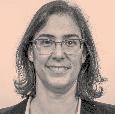



Klimis Aslanidis (GR)
Elena-Maria Cautiș (RO) European Heritage Youth Ambassador
Ana Chiricuță (RO)
Piotr Gerber (PL)
Jean-Sébastien Misson (BE)
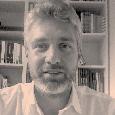

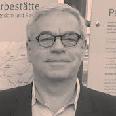

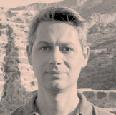
Adrian Olivier (UK)
Etienne Poncelet (FR)

Michiel Purmer (NL)

Francesco Trovo’ (IT)
Esther Valdés Tejera (ES)
SELECTION COMMITTEES AND JURY70
The interdisciplinary and diverse nature of the Committees and the Jury ensures that each entry is evaluated in a balanced way. We sincerely thank all of the experts for their dedication, insight and generosity.
For the 2022 edition, and coinciding with the European Year of Youth, the Selection Committees have for the first time included the European Heritage Youth Ambassadors among their members.
RESEARCH
Sabine Nemec-Piguet (CH) Chair
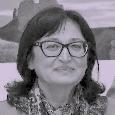

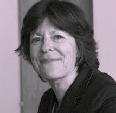

Dubravka Preradovic (RS)
Velika Stojkova Serafimovska (MK)
Levent Tökün (TR) European Heritage Youth Ambassador
Alex Torpiano (MT)
Georgios Toubekis (DE)
EDUCATION, TRAINING & SKILLS
Sara Crofts (UK) Chair
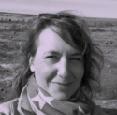


Árpád Bőczén (HU)
Ivan Bojanic (BA) European Heritage Youth Ambassador

Elena Dimitrova (BG)
Mariam ‘Maka’ Dvalishvili (GE)

Ola Fjeldheim (NO)
Hanna Lamsa (FI)
Charles Personnaz (FR)





71
The European Heritage Youth Ambassador Programme, run by the European Students’ Association for Cultural Heritage (ESACH), Europa Nostra and the European Heritage Tribune offers a platform for young people from all over Europe and beyond to share their stories and experiences in the heritage field online (e.g. on social media, websites, or blogs). Each Youth Ambassador also acts as a bridge between students and young professionals and European heritage institutions.
CITIZENS’ ENGAGEMENT & AWARENESS-RAISING
Pavlos Chatzigrigoriou (GR) Chair

Barbara Cordero (ES)
Davida de Hond (NL)
Jelena Krivokapic (RS) European Heritage Youth Ambassador



Natalia Moussienko (UA)
Baiba Murniece (LV)
HERITAGE CHAMPIONS
Eugen Vaida (RO) Chair

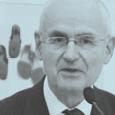
Claus-Peter Echter (DE)


Adriaan Linters (BE)
Antigoni Michael (CY) European Heritage Youth Ambassador
Sadi Petrela (AL)
Marianne Ytterdal (NO)




SELECTION COMMITTEES AND JURY72
HERITAGE AWARDS JURY
Bertrand de Feydeau (FR) Chair
Koen van Balen (BE)



Rossana Bettinelli (IT)
Pavlos Chatzigrigoriou (GR)
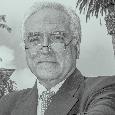
Sara Crofts (UK)
Maciej Hofman (PL)

Antonio Lamas (PT)
Johanna Leissner (DE)
Sabine Nemec-Piguet (CH)
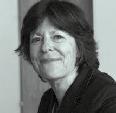


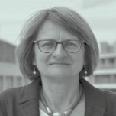
Andrew Potts (USA)

Jermina Stanojev (RS)
Eugen Vaida (RO)

Androulla Vassiliou (CY)

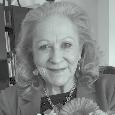
Ana Isabel Velasco Rebollo (ES)

Harry Verwayen (NL)

73
Assessor Country
Lida Miraj Albania
Leen Engelen Belgium
Piet Jaspaert Belgium
Angel Burov Bulgaria
Annina Ylikoski Finland
Katariina Ruuska-Jauhijärvi Finland
Katja Mäkinen Finland
Tapani Mustonen Finland
Agnès Sourd Tanzi France
Claire Giraud-Labalte France
Christina Margariti Greece
Christina Pinatsi Greece
Gyula Cséfalvay Hungary
Hugh Maguire Ireland
Andrea Cottini Italy
Antonella Mott Italy
Federico Guasti Italy
Maria Cristina Vannini Italy
Michele F. Fontefrancesco Italy
Sergio Riolo Italy
Rūta Kaminska Latvia
Axel Christopher Mykleby Norway
Johan Sigfred Helberg Norway
Linn Willetts Borgen Norway
Andrzej Wilk Poland
Heritage Awards Assessors
Paulina Szulist-Płuciniczak Poland
José Pedro Caiado Portugal
Maria Calado Portugal
Alexandra Mihailciuc Romania
Anamaria Iuga Romania
Vlad Sebastian Rusu Romania
Ivana Medić Serbia
Flora Bacquelaine Vidal de Llobatera Spain
Ivan Blasi Spain
Jasna Popović Spain
Luis Cueto Ferrándiz Spain
Manuel Gracia Spain
Marta Llobet Spain
Teresa Merello de Miguel Spain
Laurie Neale The Netherlands
Filiz Yenişehirlioğlu Turkey
Hande Akarca Turkey
Mustafa Hamdi Sayar Turkey
Zeynep Enlil Turkey
Kateryna Romanova Ukraine
Mykola Vikharev Ukraine
Oksana Remeniaka Ukraine
Stanislav Lytvynov Ukraine
Jo Hibbert United Kingdom
Lisa Westcott Wilkins United Kingdom
Marshall Marcus United Kingdom
Before being submitted for consideration to the Heritage Awards Jury, each of the entries to the European Heritage Awards / Europa Nostra Awards that are shortlisted by the Selection Committees are evaluated by heritage experts from across Europe.
These independent practitioners visit sites and/or conduct interviews with the entrants and later compile their assessment in a report that is presented to the Heritage Awards Jury. Their expertise in a range of disciplines ensures the credibility and high quality of the awards scheme and is an important element of the Jury’s decision-making process.
We would like to extend our sincere thanks to all of the local assessors who committed their time and expertise to the independent and diligent evaluation of each shortlisted entry.
ASSESSORS74

75
Page Number Photo credits
Cover & inside cover World Vyshyvanka Day, UKRAINE © Olexandr Tkachuk 2021 | Sewn Signs, ROMANIA
© ASOCIATIA SEMNE CUSUTE
2-3
From left to right: © Garín 1820
© Daniel Schafer | © Anne Nyhamar, 2022 Courtesy of Maria Konioti
4-5 © ASOCIATIA SEMNE CUSUTE | European Commission | Felix Q Media / Europa Nostra
8-9
© Maquina | © aNNo Architecten
10-11 © Manuel Bougot
12-13 Maria Konioti © Ephorate of Antiquities of the Cyclades | © Ephorate of Antiquities of the Cyclades, Athanasios Kartsoglou, 2022
14-15 © Atlungstad Distillery © Frederik Garshol, 2022
16-17 © PSML_José_Marques_Silva
18-19 © Péter Wagner, 2018 | © Arpad Furu 20 © Daniel Schafer | © Be Creative 22-23 © Vadym Kyrylenko | © Tetiana Polonska 24-25 © Zachary M. Jones, 2019
38-39 Diana Iabrașu /Piscu School Archive | Foto: OstafiPhotography/ Piscu School Archive 40-41 Courtesy of Semne Cusute Association 42-43 © “la Caixa” Foundation 44-45 © The Collective Foundation 46-47 © Soile Tirilä / the Finnish Heritage Agency © Sámi Museum Siida 48-49 © Alice Caracciolo | © Emanuela De Tommasi 50-51 © Sara Furlanetto 52-53 © David Cavollari, Lumbardhi Foundation, 2022
© Elmedina Arapi, 2019 54-55 © Gil Lemos 56-57
© Sergio Flores, 2021 | © Sergio Flores, 2022 58-59 © Landscape Observatory of Catalonia
© Arxiu d’Imatges de l’Observatori del Paisatge de Catalunya (Grup Drac Verd de Sitges) 60-61 © Engin Uzun, 2021
© Kenan Yavuz Ethnography Museum Archive 62-63 Courtesy of Lesia Voroniuk 64-65 © ELLET Archive | Kanaris Tsinganos for KATHIMERINI / ELLET Archive, 2013 66-67 © Sergio Siano
26-27
© SILKNOW | ©Garín 1820 28-29 © Heritage Quest | © Willem Kuijpers 30-31 © Giacomo Bordonaro 32-33 © Riina Koivisto, 2020 © Susanna Kekkonen, 2019 34-35 © Anne Nyhamar, 2022 36-37 Courtesy of Magdalena Maślak
© Paranza photographic archive 68-69 © U.T AURUM Elżbieta Szumska 70-72 Portrait photos supplied by the members of the Heritage Awards Selection Committees photos supplied by the members of the Heritage Awards © ASOCIATIA SEMNE CUSUTE
73 Portrait
Juries 75
PHOTO CREDITS76
LAUREATES 2022 EUROPEAN HERITAGE AWARDS / EUROPA NOSTRA AWARDS europanostra.org europeanheritageawards.eu eacea.ec.europa.eu/creative-europe

































